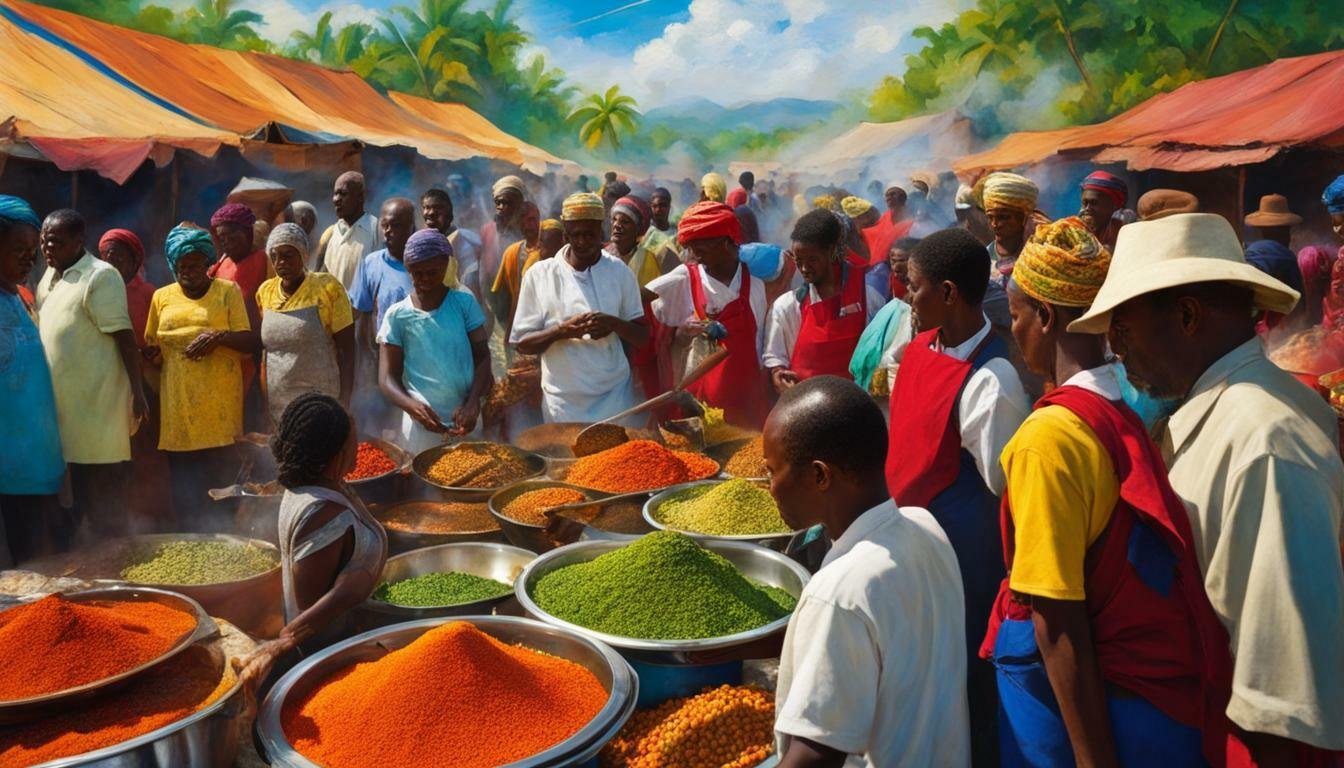Take Me to The Recipes
Forget bland bites and predictable flavors. Haitian cuisine is a vibrant explosion that tantalizes your taste buds and stirs your soul. It’s more than just a collection of dishes; it’s a storyteller, whispering tales of resilience, cultural fusion, and the unique spirit of the Haitian people.
But what makes it so special? What sets it apart from other Caribbean gems?
Imagine a dance of fiery African spices twirling with delicate French herbs, all basking in the glow of tropical sunshine. That’s the essence of Haitian cuisine. Freshly caught seafood mingles with sun-kissed fruits, while hearty rice and beans provide a comforting base. Each bite is a journey through history, reflecting the influences of indigenous Taíno, colonial powers, and the unshakeable spirit of Haiti itself.
Intrigued? We are too. Join us on a delicious exploration as we delve into the essence of Haitian cuisine. Discover the unique ingredients, the bold flavors, and the captivating stories behind each dish. Prepare to be surprised, delighted, and maybe even a little bit addicted to the magic of Haitian food.
Ready to unlock the secrets of this hidden culinary gem? Let’s get started!
Take Me to The Recipes
Haitian Cuisine – Key Takeaways
- Discover the national dish of Haiti that holds a special place in the hearts of Haitians.
- Explore the unique ingredients and cultural significance of traditional Haitian cuisine.
- Learn about popular Haitian dishes that showcase the country’s culinary prowess.
- Get ready to recreate authentic Haitian recipes and savor the tastes of Haiti in your own kitchen.
- Celebrate the diversity of global cuisine with the rich flavors and cultural significance of Haitian food.
Where is Haiti?

Located between the Caribbean Sea and the North Atlantic Ocean, Haiti occupies the western one-third of the island of Hispaniola. The Dominican Republic borders Haiti on the eastern side of the island.

Index of Contents
- Take me to the Recipes!
- More Articles
- Interesting Facts About Haiti
- The Haiti’s History and the Effect It Has Had on the Cuisine
- How Haiti’s Climate and Geography has Influenced Haitian Cuisine
- Understanding the Essence of Haitian Cuisine
- Haitian Culinary Traditions
- Exploring the Haitian Ingredients
- Traditional Haitian Cuisine – A Taste of History
- Popular Haitian Food
- How Healthy Is Haitian Food?
- Haitian Recipes you can try in your own kitchen
- Conclusion
- Frequently Asked Questions
More Interesting articles
- North and South American Cuisine – A Culinary Expedition
- Europe Cuisine: Savor the Continent’s Best Culinary Secrets!
- African Cuisine: Discover the Bold Flavors & Global Charm!
- Asian Cuisine Unlock its Secrets – Taste, Health & Global Influence!
Savor iconic Haitian Food Recipes – Click on each tantalizing picture to open up the Recipe.

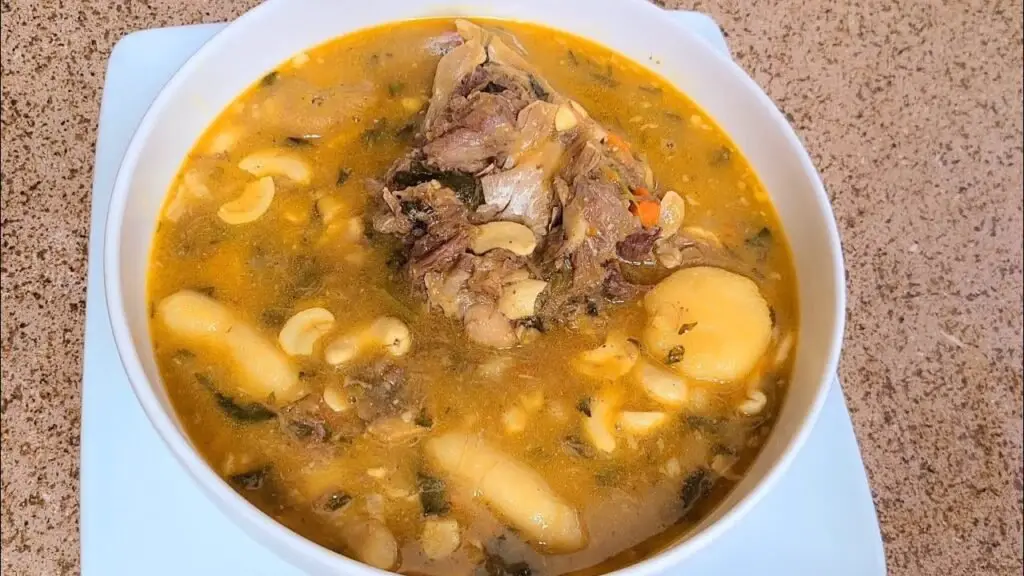
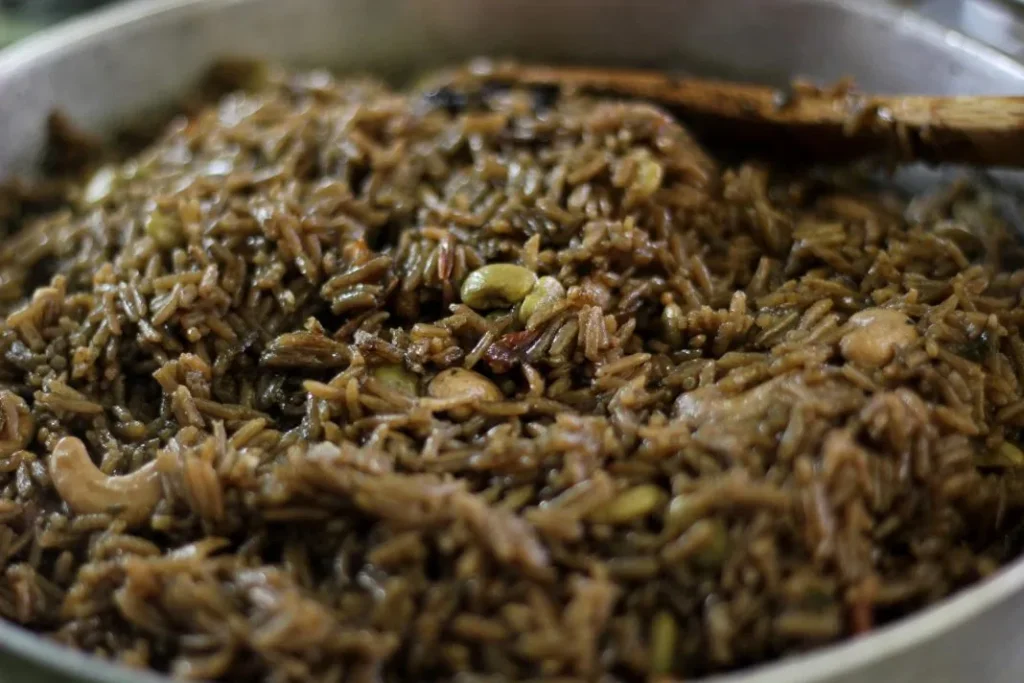
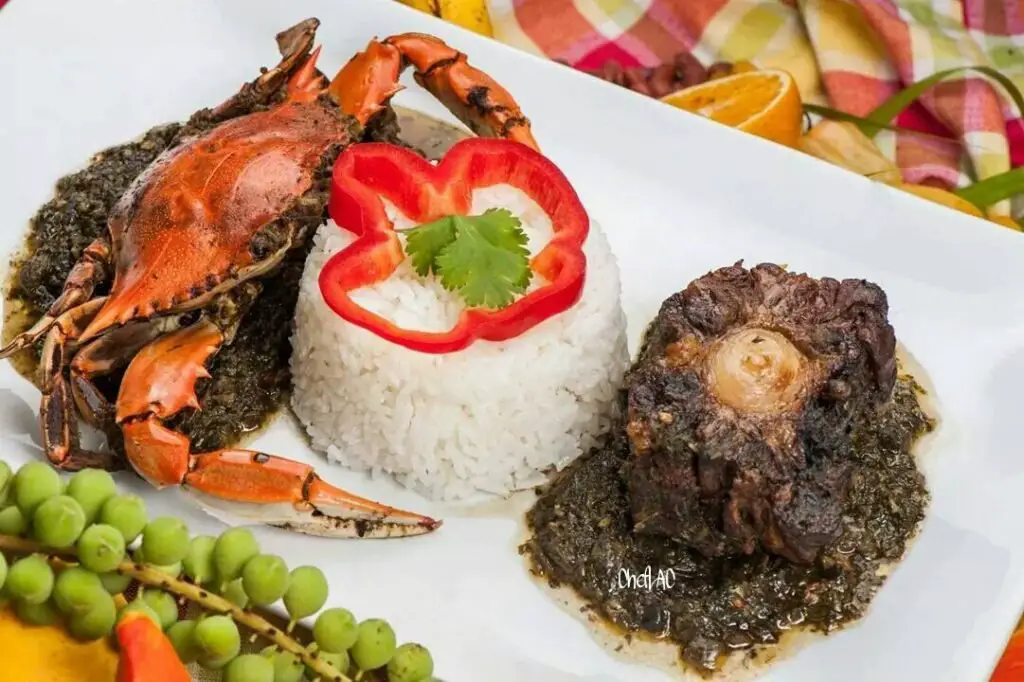
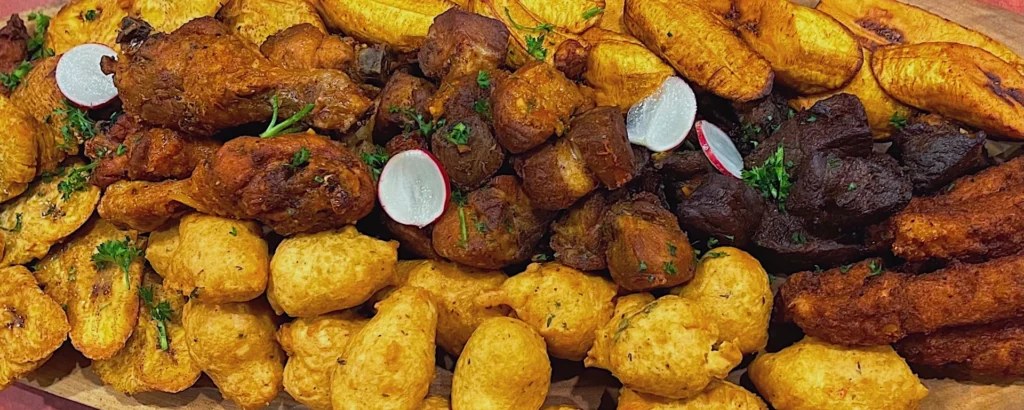

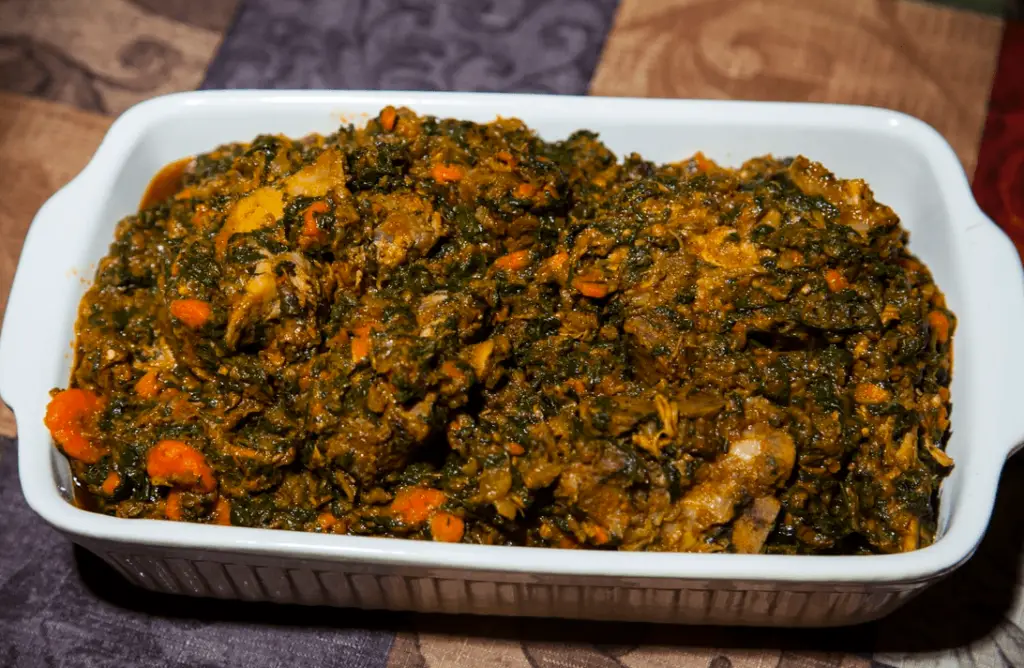
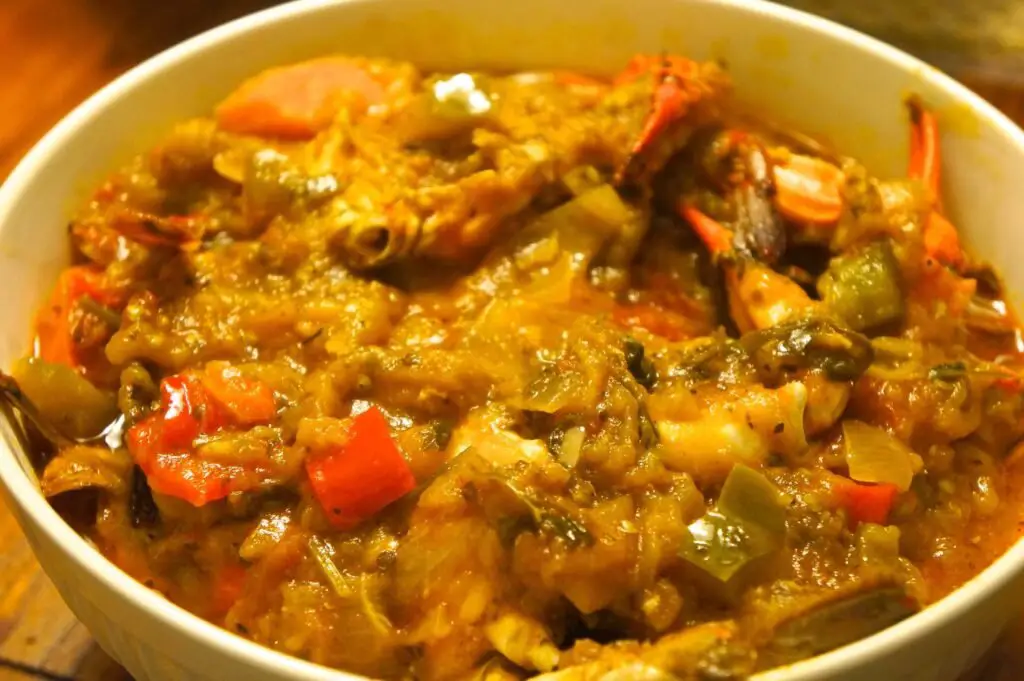
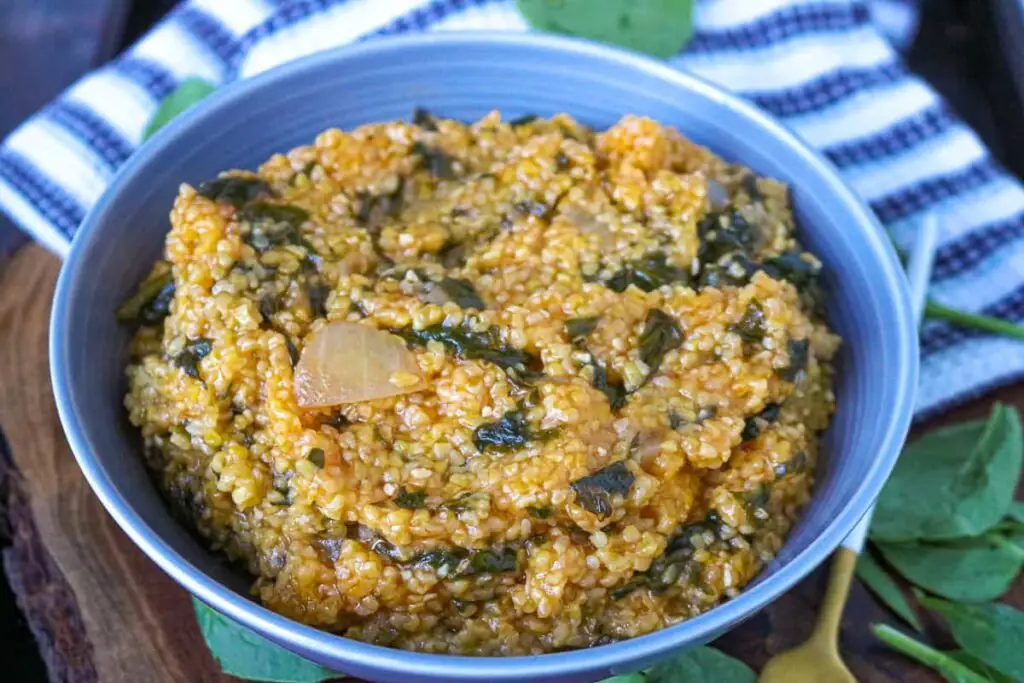
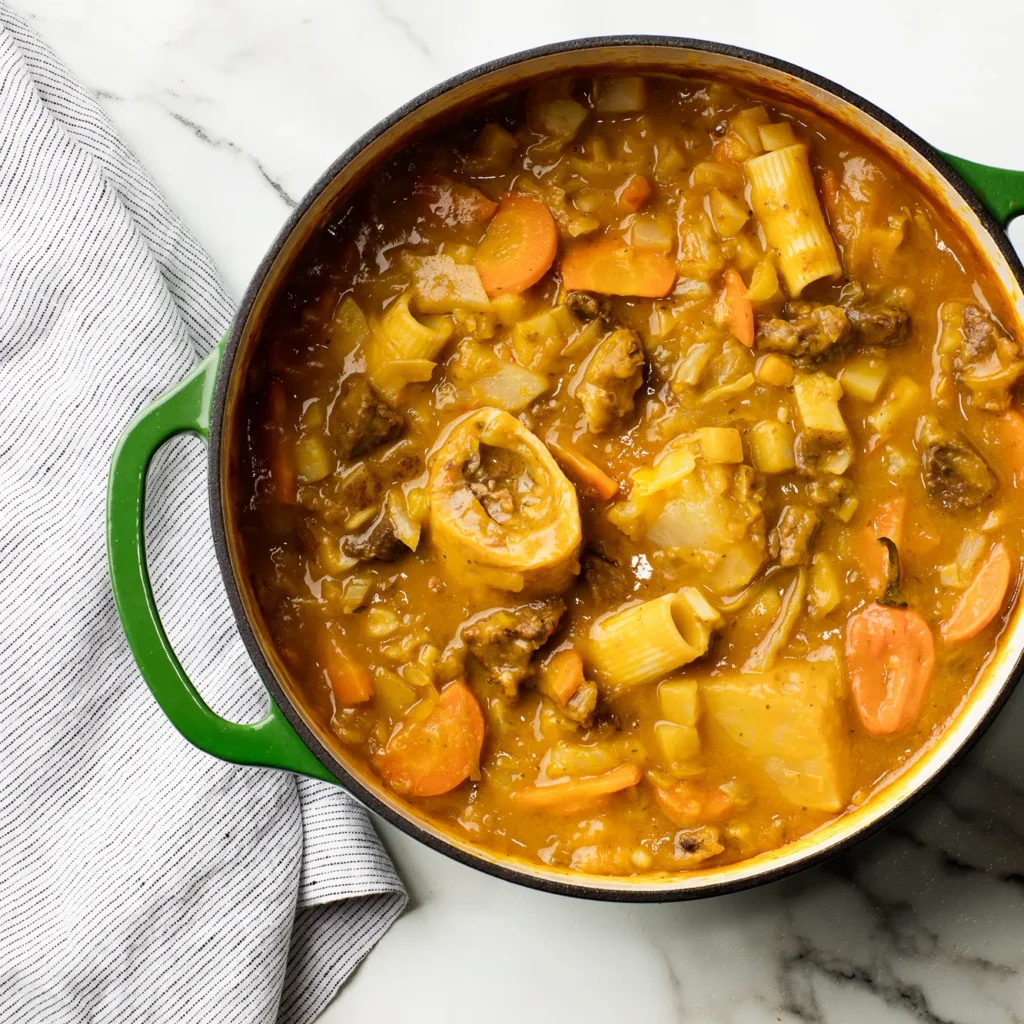
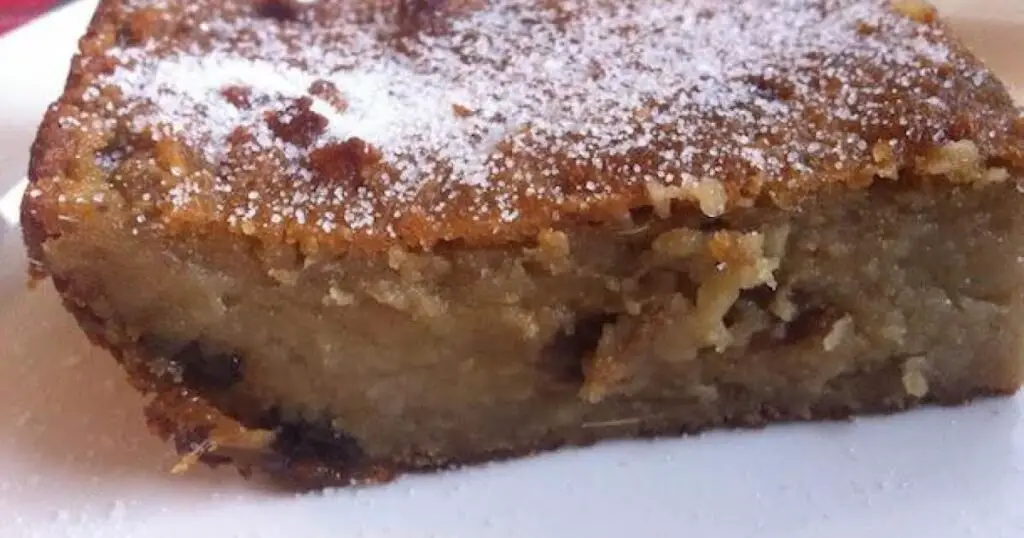
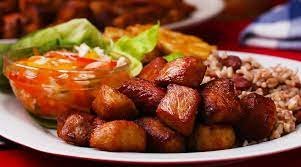
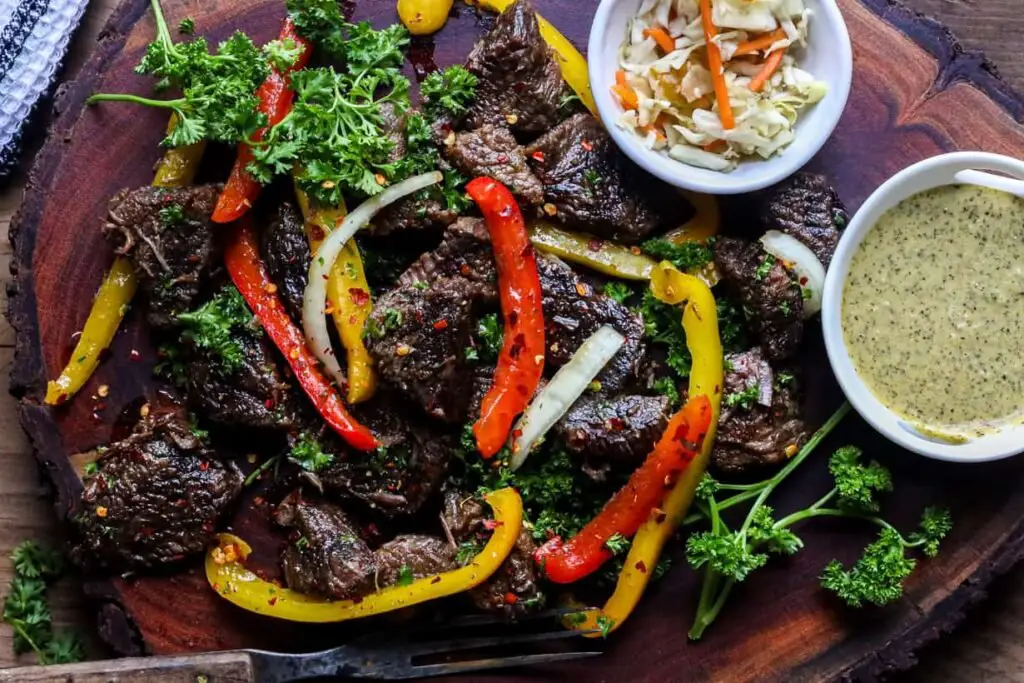
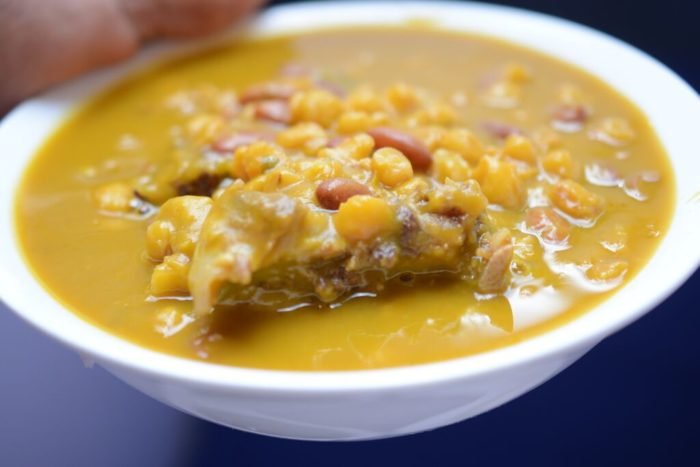




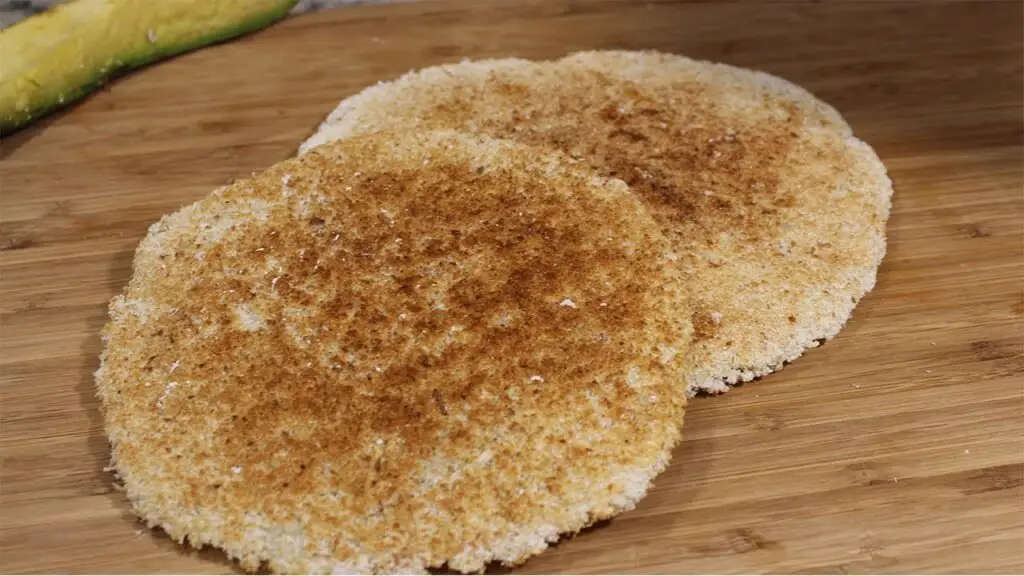
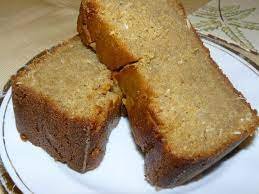
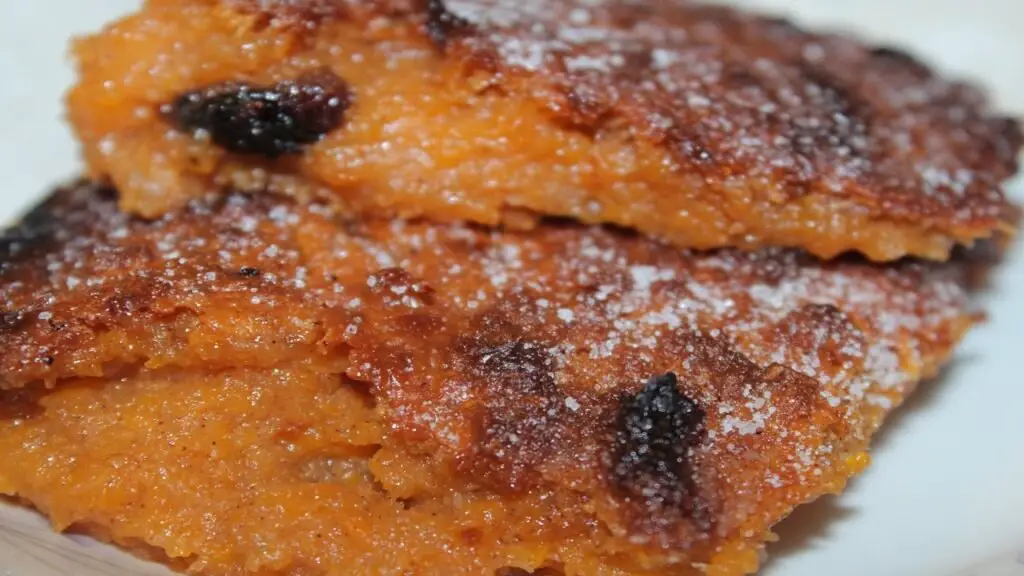

Interesting Facts About Haiti
Vodou Vibrancy

Haiti’s culture is deeply infused with Vodou, a spiritual practice combining African, Catholic, and indigenous elements. Contrary to misconceptions, Vodou is not solely about dark rituals but a rich tapestry of beliefs connecting communities.
Revolutionary Triumph
In 1804, Haiti achieved a groundbreaking milestone by becoming the first independent, black-led republic. The Haitian Revolution, born out of a struggle against slavery and colonial rule, marked a historic turning point.
Majestic Mountain Majesty

Haiti boasts breathtaking landscapes dominated by majestic mountains. The natural beauty, from lush greenery to scenic peaks, contributes to the nation’s allure.
Kreyòl Chronicles
The Haitian Kreyòl language serves as a vibrant expression of the country’s identity. A fusion of French, African languages, and indigenous influences, Kreyòl stands testament to Haiti’s linguistic resilience.
Iron Market Resilience
Port-au-Prince’s Iron Market, or Marché en Fer, has faced adversity, enduring fires and earthquakes. Despite setbacks, this bustling marketplace rises from the ashes, showcasing the resilience of Haitian commerce.
Environmental Battlefront
Haiti confronts severe environmental challenges, prominently deforestation. The struggle to balance development needs with preserving natural resources underscores the delicate equilibrium the nation strives to achieve.
Citadelle Laferrière Wonder

The Citadelle Laferrière, a massive fortress atop a mountain, stands as a symbol of liberty. Built in the early 19th century, it remains an awe-inspiring testament to Haiti’s historical struggles and triumphs.
Artistic Expressions on Tap
Haiti’s transportation takes a vibrant turn with Tap Taps—colorfully painted buses that serve as mobile canvases. Each Tap Tap is a unique masterpiece, reflecting the artistic spirit of the nation.
Carnival Extravaganza

Haitian carnivals are a spectacle of dazzling colors, lively music, and exuberant dances. Celebrated with fervor, these events provide a platform for communities to express joy and unity.
Mango Kingdom Abundance
Haiti is hailed as a mango paradise, with an abundance of mango varieties. The delicious fruit not only graces local dishes but also symbolizes the country’s agricultural richness.
Haiti’s History and the Effect It Has Had on the Cuisine

Imagine taking a bite and tasting centuries of resilience, culture, and vibrant spices. That’s the magic of Haitian cuisine, a unique blend where history simmers on your plate. Let’s embark on a delicious journey, exploring how each era has shaped this captivating culinary heritage:
Before the Europeans Arrived (Pre-1492)
Long before European ships dotted the horizon, the Taíno people thrived on Haiti, cultivating a bounty of fruits, vegetables, and maize. They even gifted the world the word “barbecue” from their “barabicu” – a wooden frame where they roasted meats over crackling fires.
This wasn’t just a cooking method; it was a symbol of community and protection, uniting villagers around warmth and flickering flames.
A Collision of Cultures (1492-1791)
The arrival of European powers brought new ingredients and techniques. The Spanish introduced spices and livestock, laying the foundation for bold flavors. Then came the French, transforming Haiti into a colony (Saint-Domingue) and merging their rich culinary traditions with local ingredients.
This delicious clash gave birth to Creole cooking, a unique blend where African, French, and Taíno flavors danced on the palate.
Imagine delicate French herbs intertwining with fiery African spices, creating a symphony of tastes that was both familiar and exciting.
Independence and Beyond (1804-Present)
In 1804, Haiti threw off the shackles of colonialism, marking a turning point not just in history but also on the plate. French influences remained, evident in creamy sauces and fluffy breads, but African heritage shone through in the use of fiery Scotch bonnet peppers and earthy spices like cumin and cloves.
Additionally, a wave of Arab migration added hints of Levantine charm, enriching the culinary landscape with dishes like kibbeh and hummus.
Modern Twists on Tradition

Today, Haitian cuisine continues to evolve, incorporating influences from around the globe. Think vibrant tropical fruits mingling with root vegetables, fluffy rice alongside hearty black beans, and fresh seafood playing in coconut-infused broths.
Oregano, thyme, and the fiery punch of Scotch bonnet peppers weave their magic, creating a modern twist on traditional flavors that’s both familiar and exciting.
Tasting History in Every Bite
Haitian cuisine is a vibrant tapestry woven from diverse threads. Each historical period has left its mark, contributing to a rich and evolving culinary heritage.
So, the next time you savor a dish from Haiti, remember – you’re not just enjoying a meal; you’re experiencing a journey through time, savoring the flavors of a culture that has risen above adversity and continues to create dishes that are both delicious and deeply meaningful.
References
How Haiti’s Climate and Geography has Influenced Haitian Cuisine

Let’s embark on a delicious journey to understand what makes Haitian food truly special:
Sun-Kissed Ingredients, Straight from Paradise
Blessed with a Caribbean climate, Haiti bursts with tropical fruits like creamy avocados, juicy mangoes, and sunshine-kissed pineapples. These aren’t just desserts; they’re snacks, ingredients, and bursts of flavor woven into everyday dishes.
Imagine chomping on a juicy sugarcane stick for a natural sugar rush – a taste of pure island living.
Island Nation, Seafood Symphony
Surrounded by the Caribbean Sea, Haiti embraces the ocean’s bounty. Fresh fish and seafood are culinary stars, from hearty stews to delicate grilled preparations. Each bite carries the freshness of the sea, a testament to Haiti’s deep connection to its coastal shores.
A Crossroads of Cultures, a Fusion of Flavors
Haiti’s position as an island nation facilitated centuries of cultural exchange. African slaves brought okra, taro, and their rich spice traditions. Spanish colonization added new ingredients, while French influence lingered even after independence.
This beautiful blend gave birth to Creole cuisine, where African, French, and indigenous Taíno flavors meld into a unique and delicious dance.
Where Rice and Beans Meet Callaloo and Spices
Rice and beans are staples, reflecting both African and European influences. Imagine fluffy white rice alongside hearty black beans, a base for countless dishes. Then, take a leap into callaloo, a vibrant stew bursting with crab meat, spinach, okra, and the creamy caress of coconut milk.
But wait, there’s more! Haitian cuisine isn’t shy with spices. Fiery Scotch bonnet peppers, aromatic herbs, and potent blends like “epis” add a unique kick, setting it apart from its Caribbean neighbors.
A Legacy of Flavor, a Promise of Discovery
The warmth of the sun, the bounty of the sea, and the rich tapestry of history have all come together to create the unforgettable flavors of Haitian cuisine. Each bite is a journey through time, a celebration of resilience, and a promise of delicious discovery.
So, the next time you explore the world’s cuisines, don’t miss the magic of Haiti – a true fusion feast for your senses!
Understanding the Essence of Haitian Cuisine

In the vibrant tapestry of global gastronomy, Haitian cuisine stands as a unique and captivating thread, weaving together a symphony of flavors, history, and tradition. Let’s delve into the heart of what makes Haitian cuisine so special, exploring the key ingredients, cultural influences, and culinary techniques that elevate it to an unparalleled culinary experience.
Flavors that Dance on the Palate
Mélange of Spices: At the heart of Haitian cuisine is a dance of spices that elevates every dish to a flavor-packed celebration. The trinity of onions, bell peppers, and celery forms the base, while star players like garlic, thyme, and parsley add depth. The iconic epis, a blend of herbs and spices, serves as the maestro orchestrating a harmonious culinary symphony.
Creole Magic: The essence of Haitian cuisine lies in its Creole flavors. From Griot (fried pork) to Joumou soup (pumpkin soup), the use of Scotch bonnet peppers, cloves, and the secret ingredient, epis, creates a magical fusion that ignites the taste buds.
Staple Ingredients and Culinary Artistry
Roots and Tuber Love: Haitian cuisine is rooted in an abundance of local produce. Taro, yams, plantains, and malanga are cherished staples, transforming into hearty stews, fried delights, and comforting side dishes. The ingenious use of manioc, a tuber yielding cassava flour, showcases the culinary artistry deeply embedded in the Haitian kitchen.
Creole Cooking Techniques: The culinary techniques employed in Haitian kitchens are a blend of tradition and innovation. From marinades to slow-cooking over open flames, Haitian chefs infuse love and skill into each dish. The Griot, marinated and double-cooked pork, and the Joumou soup, slow-simmered with a myriad of ingredients, showcase the mastery of Haitian culinary craftsmanship.
Cultural Celebrations on the Plate
Feast for the Senses: Haitian cuisine is not just about sustenance; it’s a celebration of life. Traditional dishes take center stage during cultural events and holidays, with Griot and Joumou soup playing prominent roles during Independence Day festivities. The cuisine is a testament to the connection between food, community, and celebration.
Haitian Culinary Traditions

The culinary traditions are a reflection of the island’s history and cultural rituals. One of the most emblematic is the preparation of “soup joumou,” a pumpkin soup traditionally consumed on New Year’s Day to commemorate Haiti’s independence.
Street food also plays a significant role, with items like “pate kode” and “banann peze” offering a taste of Haiti’s vibrant street culture. These traditions are passed down through generations, preserving the soul of Haitian culture through its cuisine.
Exploring the Haitian Ingredients: The Flavors of Haiti
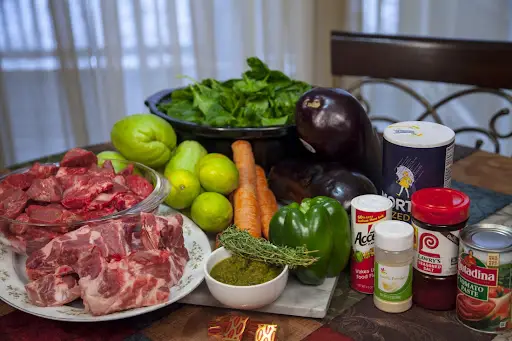
The flavors of Haiti are as dynamic as its history, characterized by:
- Plantains: A versatile staple used in both savory and sweet dishes.
- Rice and Beans: The foundation of many meals, providing sustenance and comfort.
- Pork: Especially “griot,” marinated and fried to perfection.
- Seafood: Fresh from the Caribbean, often spiced and grilled.
- Mangoes: Sweet and juicy, a tropical delight.
- Epis: The essential blend of herbs and spices that seasons many Haitian dishes.
- Pikliz: A spicy pickled vegetable condiment tht accompanies many meals.
These ingredients, combined with the Haitian zest for life and love of bold flavors, create a cuisine that is both nourishing and celebratory, a true reflection of Haiti’s rich cultural tapestry.
Traditional Haitian Cuisine – A Taste of History
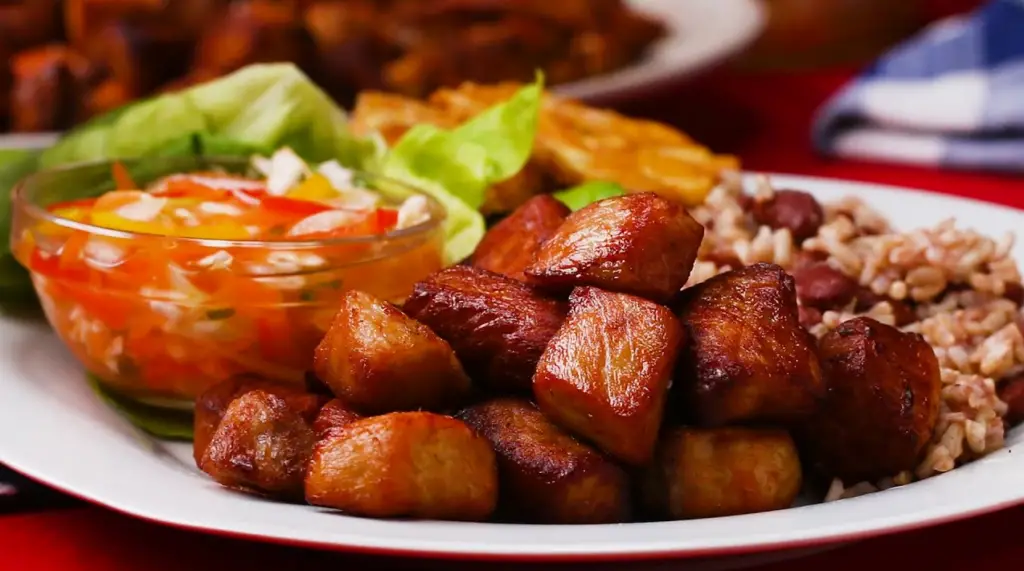
When it comes to Haitian cuisine, it’s impossible to ignore the deep historical and cultural influences that flavor its dishes. Traditional Haitian food is a true reflection of the country’s history and is a celebration of its African, French, and indigenous roots. These cultural touches are what make Haitian cuisine unique and memorable.
The essential ingredients of Haitian cuisine are varied and flavorful, ranging from fiery peppers to yams and plantains. These ingredients are often paired with meat and seafood to create dishes that are both hearty and satisfying. The dishes are typically prepared using braising, stewing, and marinating techniques that accentuate their unique flavors.
Haitian cuisine is also closely tied to Haitian culture. For example, griot, a marinated and fried pork dish, is considered a staple of Haitian cuisine and is often prepared during special occasions and holidays. Similarly, tassot, a marinated and fried goat dish, is a popular dish cherished by locals and visitors alike. These dishes are not only delicious but serve as a reminder of the deep cultural roots of Haitian cuisine.
Whether it’s the aroma of a simmering vegetable stew or the sizzle of meat on a hot skillet, the flavors of traditional Haitian cuisine are sure to tantalize the taste buds and offer a culinary experience like no other.
Popular Haitian Food
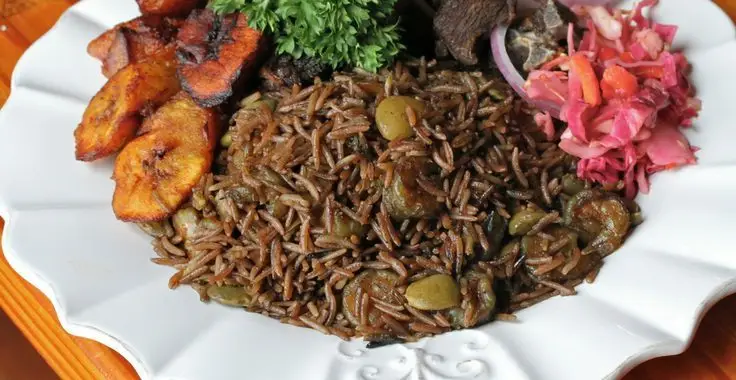
Some of the more popular Haitian dishes include the following.
Griot
Marinated and twice-cooked pork perfection.
Joumou Soup
Hearty pumpkin soup, Independence Day star.
Accra
Tasty salt cod fritters, irresistible.
Diri Ak Djon Djon
Black mushroom rice, savory delight.
Lambi
Conch stew, a coastal treasure.
Pikliz
Spicy pickled vegetables, zesty kick.
Bouyon
Hearty meat and vegetable soup.
Bannann Peze
Fried plantains, crispy and caramelized.
Labouyi Bannann
Banana porridge, sweet morning comfort.
Tassot
Fried goat bites, flavorful indulgence.
How Healthy Is Haitian Food?

Haitian cuisine isn’t just a collection of dishes; it’s a vibrant tapestry woven from diverse cultures, history, and geography.
Every bite bursts with the freshness of tropical fruits like mangoes and avocados, the earthiness of root vegetables like yams and cassava, and the fiery kick of spices like oregano, thyme, and Scotch bonnet peppers.
Think Soup Jou Mou, a New Year’s Day staple boasting butternut squash, beef, noodles, and vegetables – a symphony of flavors celebrating new beginnings.
But beyond the deliciousness, lies a unique perspective on food. In Haitian culture, food is the foundation of love, grieving, and celebration. It’s not just about sustenance; it’s about connection, community, and embracing the balance and joy of life.
However, the realities of political instability, natural disasters, and the pandemic create significant challenges for Haitian well-being. Access to healthcare facilities is limited, and undernourishment unfortunately affects a large portion of the population.
Despite these challenges, there’s progress to be celebrated. Life expectancy is rising, literacy rates are improving, and the fight against malnutrition continues. This story isn’t just about food; it’s about the resilience and strength of the Haitian people.
References
- haitihealthinitiative.org
- hia.paho.org
- news.un.org
- msh.org
- healthcluster.who.int
- foodinsight.org
- dune.une.edu
- wfp.org
Haitian Recipes you can try in your own kitchen
Are you ready to try your hand at Haitian cooking? With a few key ingredients and some simple techniques, you can bring the authentic taste of Haiti into your own kitchen. Here are some recipes to get you started:
The National Dish of Haitian Cuisine – “diri ak djon djon”
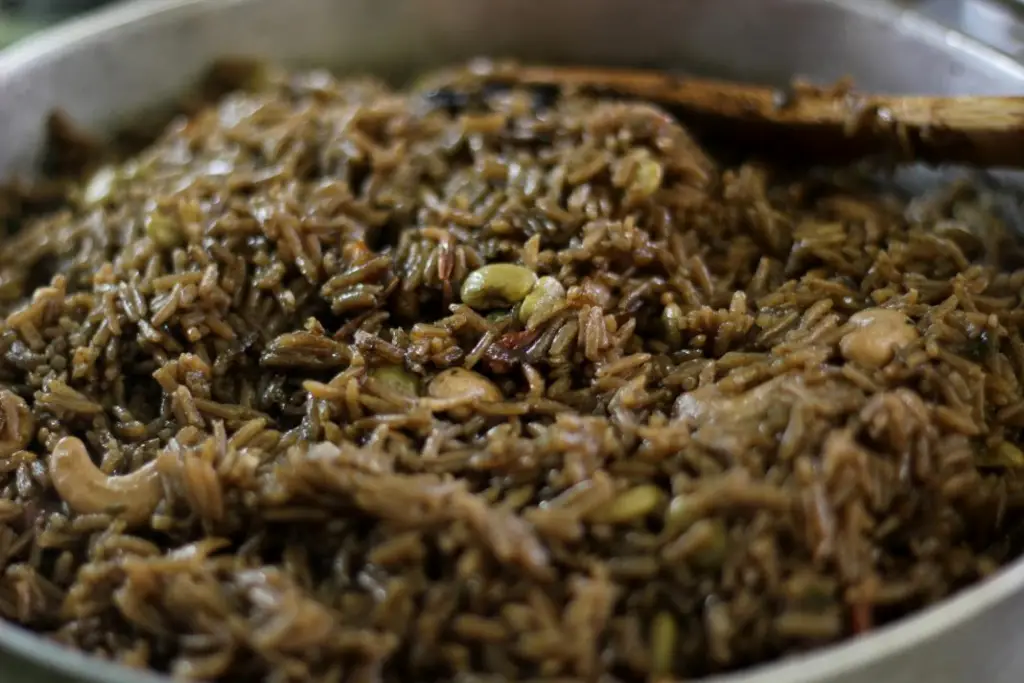
One of the most iconic dishes in Haitian cuisine is the national dish known as “diri ak djon djon.” This dish is a quintessential part of Haitian culture and serves as a symbol of unity for the Haitian people.
The dish consists of rice cooked with djon djon mushrooms, which are unique to Haiti and lend a distinct flavor and color to the dish. The rice is typically served with flavorful meat or seafood, such as chicken, beef, pork, or shrimp.
Not only is the dish delicious, but it also carries a significant cultural and historical significance for Haitians. The name “diri ak djon djon” is derived from the Haitian Creole language and translates to “rice with black mushrooms.” The dish represents the blending of cultures in Haiti, with the rice symbolizing the African influence and the djon djon mushrooms representing the indigenous Haitian culture.
When dining in Haiti, it is common to see “diri ak djon djon” being enjoyed at celebratory events, such as weddings and parties. It brings people together and creates a sense of community, just as it has for generations.
While there are many other popular Haitian dishes, none are quite as special and revered as the national dish. It is a dish that truly captures the heart and soul of Haitian cuisine and represents the unity and identity of the Haitian people.
Here’s a recipe for Diri ak Djon Djon:
Haitian Food – Ingredients
- 1 cup dried djon djon mushrooms
- 2 cups jasmine or long-grain rice
- 4 cups water (including the mushroom water)
- 1 small onion, finely chopped
- 2 cloves garlic, minced
- 1 bell pepper, chopped (optional)
- 1/2 cup frozen green peas (optional)
- 1/2 cup diced carrots (optional)
- 1/4 cup oil (vegetable or coconut oil)
- 1/2 teaspoon thyme (fresh or dried)
- 1/2 teaspoon clove powder or 2-3 whole cloves
- Salt and pepper to taste
- 1 cube chicken or vegetable bouillon (optional)
Haitian Food – Preparation Instructions:
Mushroom Water Preparation
- In a bowl, soak the dried djon djon mushrooms in 3 cups of warm water for about 30 minutes.
- After soaking, strain the mushrooms, reserving the black water.
- This water will be used to cook the rice and give it its black color.
- In a pot, heat the oil over medium heat.
- Add the chopped onions, garlic, bell pepper (if using), and sauté until the onions are translucent.
- Add the rice to the pot and stir, ensuring the rice is well-coated with the oil and onion mixture.
- Pour in the reserved mushroom water.
- If the mushroom water isn’t enough, add additional water to make it up to 4 cups.
- Add the thyme, clove powder or whole cloves, salt, pepper, and bouillon cube (if using).
- Stir to combine.
- Bring the mixture to a boil, then reduce the heat to low.
- Cover the pot and let the rice simmer for about 20-25 minutes, or until the rice is cooked through and the water is absorbed.
- Halfway through the cooking process, add the green peas and diced carrots (if using).
- Stir gently and continue cooking until done.
- Once the rice is cooked, fluff it with a fork to separate the grains.
Serve the Diri ak Djon Djon with your choice of Haitian protein dishes, such as griot (fried pork) or poulet en sauce (chicken in sauce). Enjoy your Haitian Black Mushroom Rice!
Haitian Cuisine – Tassot
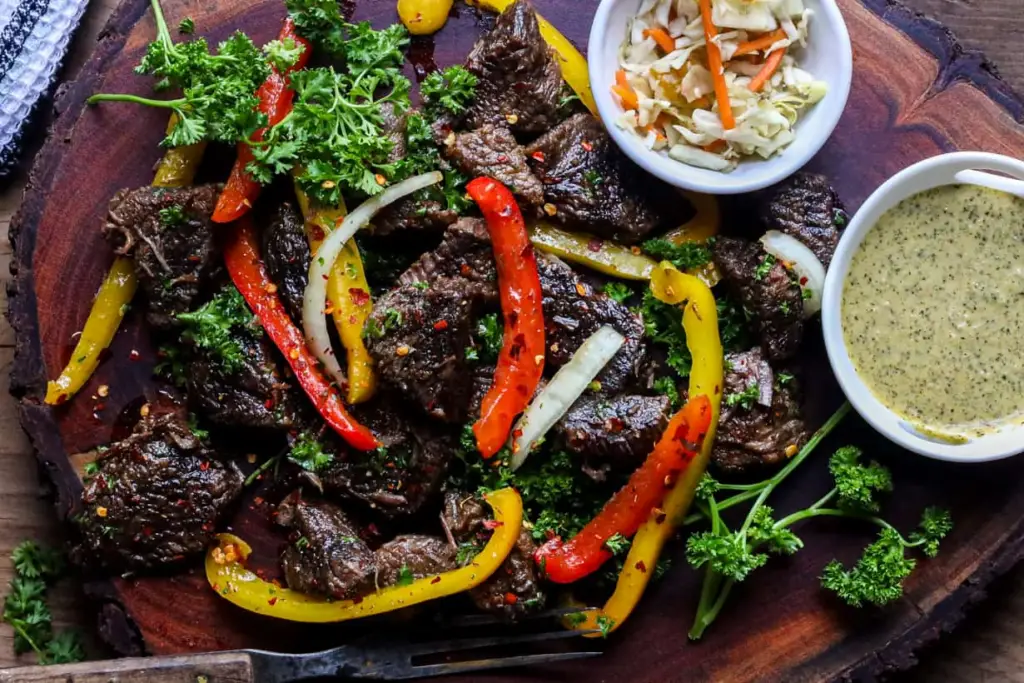
One of the most famous Haitian dishes is the tassot, which involves marinating and frying goat meat until it is crispy and flavorful.
Tassot, often referred to as “Tassot Cabrit” when made with goat or “Tassot Boeuf” when made with beef, is a popular Haitian dish. It consists of meat that’s been marinated, boiled, then fried until crispy. Here’s a recipe for Tassot Cabrit (Goat):
Haitian Food – Ingredients:
- 500g goat meat, cut into bite-sized pieces (you can also use beef if preferred)
- Juice of 2 limes
- 4 cloves garlic, minced
- 1 small onion, finely chopped
- 2 green onions, chopped
- 1/4 cup sour orange juice (or a mix of orange and lime juice)
- 1 teaspoon salt
- 1/2 teaspoon black pepper
- 1/2 teaspoon thyme (fresh or dried)
- 1/4 teaspoon clove powder
- 1 Scotch bonnet pepper, seeds removed and finely chopped (optional for heat)
- 2 cups water
- Oil for frying
Haitian Food – Preparation Instructions:
Marinating the Meat
- In a large bowl, combine the lime juice, garlic, onion, green onions, sour orange juice, salt, black pepper, thyme, clove powder, and Scotch bonnet pepper (if using).
- Mix well to create the marinade.
- Add the goat meat to the marinade, ensuring each piece is well-coated.
- Cover the bowl and refrigerate for at least 4 hours, preferably overnight.
Boiling the Meat
- In a large pot, add the marinated goat meat along with the marinade and 2 cups of water.
- Bring to a boil, then reduce the heat to low and simmer until the meat is tender, about 1-1.5 hours.
- Add more water if necessary to prevent the meat from drying out.
- Once the meat is tender, remove it from the pot and set it aside to drain and cool.
- You can reserve the broth for another use or as a dipping sauce.
Frying the Meat
- Heat oil in a deep frying pan over medium-high heat.
- Once the oil is hot, add the boiled goat meat pieces and fry until they are crispy and golden brown on all sides.
- Remove the fried meat from the oil and place it on paper towels to drain any excess oil.
Serve the Tassot with rice, fried plantains, or pikliz (Haitian spicy pickled vegetable relish). Enjoy your Haitian Tassot!
Haitian Food – Tchaka

History and Background of Tchaka
Tchaka, a staple dish in Haitian cuisine, has its roots deeply intertwined with the country’s history and cultural traditions. Originating from the indigenous Taino people, tchaka reflects the resourcefulness of Haitian cooking, utilizing locally available ingredients like maize, beans, and squash.
This savory porridge has evolved over time, becoming a symbol of communal gatherings and celebrations, where families and communities come together to share a hearty and flavorful meal.
Region of Origin
Tchaka is a traditional Haitian dish enjoyed across the country, particularly during festive occasions and cultural celebrations. Its preparation may vary based on regional preferences and local ingredients.
Ingredients for Tchaka
For Tchaka Base:
- 1 cup maize (corn) kernels
- 1 cup dried lima beans
- 1 cup kabocha squash, diced
- 1 cup malanga, diced
- 1 cup plantains, sliced
- 1 cup yams, diced
- 1 cup dumplings (cornmeal and water)
- 1 onion, chopped
- 1 scotch bonnet pepper, whole
- 1 green bell pepper, chopped
- 1 sprig thyme
- 2 cloves garlic, minced
- Salt and pepper to taste
- Water as needed
For Garnish (Optional):
- Coconut milk
- Avocado slices
Recipe for Tchaka
Preparing Tchaka Base
- Soak Beans:
- Soak dried lima beans overnight or for at least 8 hours.
- Cook Maize and Beans:
- In a large pot, combine soaked lima beans and maize.
- Add enough water to cover the beans and maize, and cook until both are tender.
- Add Vegetables:
- Introduce diced kabocha squash, malanga, plantains, yams, onions, scotch bonnet pepper, green bell pepper, thyme, and minced garlic.
- Make Dumplings:
- Mix cornmeal with water to form a thick, pliable dough.
- Shape the dough into small dumplings.
Serving Information
- Servings: 6-8
- Cooking Time: Approximately 2 hours
- Calories (per serving): Approximately 300 kcal
- Add Dumplings to Tchaka:
- Drop the cornmeal dumplings into the pot.
- Season and Simmer:
- Season the tchaka with salt and pepper to taste.
- Simmer the mixture, stirring occasionally, until all ingredients are well-cooked and flavors meld.
- Adjust Consistency and Garnish:
- Adjust the consistency by adding water if needed.
- Optionally, drizzle with coconut milk and garnish with avocado slices before serving.
- Serve Tchaka:
- Ladle the warm tchaka into bowls, ensuring each serving has a variety of vegetables and dumplings.
Tchaka embodies the heartiness and communal spirit of Haitian cuisine. This flavorful porridge is not only a nourishing and satisfying dish but also a representation of the vibrant culinary traditions that define Haitian culture.
Haitian Cuisine – Akra

Another popular dish is the akra, made with fried malanga fritters that are crispy on the outside and soft on the inside.
Akra (or “Malanga Fritters”) is a popular Haitian appetizer made from grated malanga (a root vegetable), spices, and sometimes shrimp. These fritters are crispy on the outside and soft on the inside. Here’s a recipe for Haitian Akra:
Haitian Food – Ingredients:
- 2-3 large malangas, peeled and grated
- 1 small onion, finely chopped
- 2-3 cloves garlic, minced
- 1/2 bell pepper, finely chopped
- 1-2 Scotch bonnet peppers, seeds removed and finely chopped (adjust to your heat preference)
- 1/4 cup chopped parsley
- 1/2 teaspoon black pepper
- 1/2 teaspoon salt (or to taste)
- 1/2 teaspoon thyme (fresh or dried)
- 1/2 cup cooked and chopped shrimp (optional)
- 1 beaten egg (optional, for binding)
- Oil for frying
Haitian Food – Preparation Instructions:
Prepping the Malanga
- After peeling the malangas, grate them using a box grater or a food processor.
- Place the grated malanga in a cheesecloth or a clean kitchen towel and squeeze out as much liquid as possible.
- This will help the fritters become crispy when fried.
- In a large mixing bowl, combine the grated malanga, chopped onion, minced garlic, chopped bell pepper, Scotch bonnet peppers, parsley, black pepper, salt, thyme, and shrimp (if using).
- Mix well until all the ingredients are well-incorporated.
- If the mixture feels too loose or wet, you can add a beaten egg to help bind everything together.
Frying the Akra
- Heat oil in a deep frying pan over medium-high heat.
- Once the oil is hot, take a spoonful of the malanga mixture and carefully drop it into the hot oil. Flatten it slightly to form a patty shape.
- Repeat this process with the remaining mixture, but don’t overcrowd the pan.
- Fry the akra fritters for 3-4 minutes on each side or until they are golden brown and crispy.
- Ensure they are cooked through in the middle.
- Once fried, remove the akra from the oil and place them on paper towels to drain any excess oil.
Serve the Akra hot with pikliz (Haitian spicy pickled vegetable relish) or a dipping sauce of your choice. Enjoy your Haitian Akra!
Haitian Cuisine – The Griot
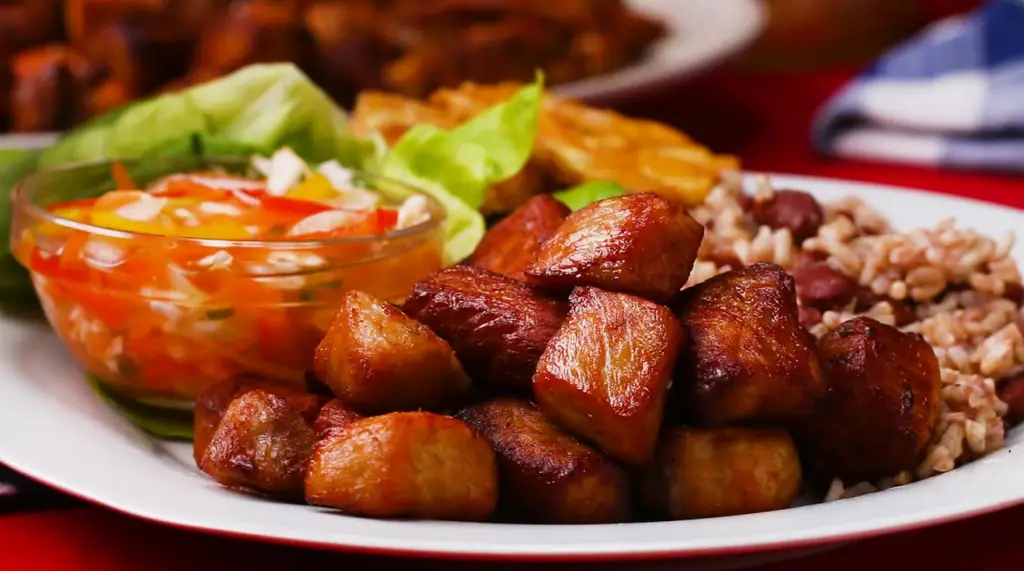
The griot is another must-try dish, made from marinated and fried pork that is crispy on the outside and tender on the inside. This dish is often served with pikliz, a spicy pickled vegetable relish that adds a kick of flavor to the dish.
Griot (pronounced “gree-oh”) is one of the most beloved dishes in Haitian cuisine. It’s essentially marinated, boiled, and then fried pork chunks, typically served with pikliz (a spicy pickled vegetable mixture) and rice or fried plantains. Here’s a recipe for Haitian Griot:
Haitian Food – Ingredients:
- 1 kg (2.2 lbs) pork shoulder or pork butt, cut into 2-inch chunks
- Juice of 2 limes
- 4-5 cloves garlic, minced
- 1 small onion, finely chopped
- 2 green onions, chopped
- 1/2 bell pepper, chopped
- 1-2 Scotch bonnet peppers, seeds removed and finely chopped (adjust to your heat preference)
- 1/4 cup sour orange juice (or a mix of orange and lime juice)
- 1 teaspoon salt (or to taste)
- 1/2 teaspoon black pepper
- 1 teaspoon thyme (fresh or dried)
- 1/2 teaspoon rosemary (optional)
- 2 cups water
- Oil for frying
Haitian Food – Preparation Instructions:
Marinating the Pork
- In a large bowl, combine the lime juice, minced garlic, chopped onions, green onions, bell pepper, Scotch bonnet peppers, sour orange juice, salt, black pepper, thyme, and rosemary.
- Mix well to create the marinade.
- Add the pork chunks to the marinade, ensuring each piece is well-coated.
- Cover the bowl and refrigerate for at least 4 hours, preferably overnight.
Boiling the Pork
- In a large pot, add the marinated pork along with the marinade and 2 cups of water.
- Bring to a boil, then reduce the heat to low and simmer until the pork is tender, about 1-1.5 hours.
- Once the pork is tender, remove it from the pot and set it aside to drain and cool.
- You can reserve the broth for another use or as a dipping sauce.
Frying the Pork
- Heat oil in a deep frying pan over medium-high heat.
- Once the oil is hot, add the boiled pork chunks and fry until they are crispy and golden brown on all sides.
- Remove the fried pork from the oil and place it on paper towels to drain any excess oil.
Serve the Griot with pikliz, rice, fried plantains, or any side of your choice. Enjoy your Haitian Griot!
Haitian Food – Diri ak Lalo

History and Background of Diri ak Lalo
Diri ak Lalo, a traditional Haitian dish, blends the vibrant flavors of rice with the earthy richness of lalo, also known as jute leaves. Rooted in Haiti’s agricultural landscape, this dish reflects the resourcefulness and creativity of Haitian cuisine, incorporating locally grown ingredients to create a nourishing and flavorful meal.
Diri ak Lalo exemplifies the connection between the Haitian people and their land, with each ingredient contributing to a dish that embodies the spirit of Haitian culinary heritage.
Region of Origin
Diri ak Lalo is enjoyed throughout Haiti, with variations in preparation methods based on regional preferences. The dish is a staple in both rural and urban areas, representing a cultural link between the diverse regions of the country.
Haitian Food – Ingredients for Diri ak Lalo
Rice Base:
- 2 cups long-grain rice
- 1 onion, finely chopped
- 3 cloves garlic, minced
- 2 sprigs thyme
- 2 sprigs parsley
- 2 tablespoons tomato paste
- 4 cups chicken or vegetable broth
- 2 tablespoons vegetable oil
- Salt and black pepper to taste
Lalo (Jute Leaves):
- 4 cups fresh lalo leaves, cleaned and chopped
- 1 onion, finely chopped
- 2 cloves garlic, minced
- 1 scotch bonnet pepper (optional for heat)
- 2 cups coconut milk
- 2 tablespoons vegetable oil
- Salt and black pepper to taste
Haitian Food – Recipe for Diri ak Lalo
Preparing the Rice Base
- Rinse Rice:
- Rinse the long-grain rice under cold water until the water runs clear.
- Sauté Aromatics:
- In a large pot, sauté chopped onion and minced garlic in vegetable oil until fragrant.
- Add thyme, parsley, and tomato paste, stirring to combine.
- Add Rice and Broth:
- Add rinsed rice to the pot, stirring to coat with aromatics.
- Pour in chicken or vegetable broth, season with salt and black pepper, and bring to a boil.
Serving Information
- Servings: 6-8
- Preparation Time: 15 minutes
- Cooking Time: Approximately 20-25 minutes
- Calories (per serving): Approximately 300 kcal
Cooking the Lalo
- Sauté Aromatics for Lalo:
- In a separate pan, sauté finely chopped onion, minced garlic, and scotch bonnet pepper (if using) in vegetable oil.
- Add Lalo Leaves:
- Add cleaned and chopped lalo leaves to the pan, stirring until wilted.
- Incorporate Coconut Milk:
- Pour in coconut milk, season with salt and black pepper, and let the lalo mixture simmer until the leaves are tender.
Combining Rice and Lalo
- Combine Rice and Lalo:
- Once the rice is cooked, fluff it with a fork.
- Gently fold the cooked lalo mixture into the rice until well combined.
- Simmer and Serve:
- Allow the combined Diri ak Lalo to simmer for a few more minutes to meld flavors.
- Serve hot as a flavorful and nutritious main dish.
Diri ak Lalo is a delicious representation of Haitian culinary craftsmanship, where the union of rice and lalo creates a dish that speaks to the richness of the Haitian food culture.
Haitian Food – Fritay
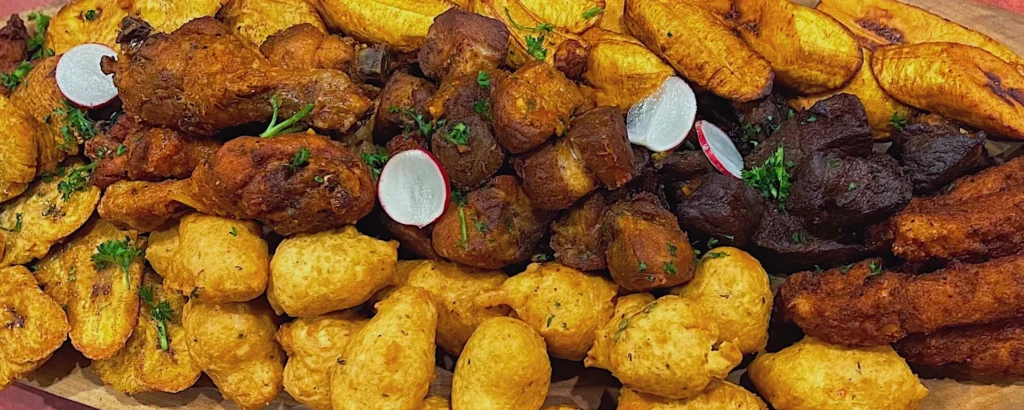
History and Background of Fritay
Fritay, a beloved dish in Haitian cuisine, reflects the cultural tapestry of the Caribbean nation. Rooted in African and French culinary influences, fritay emerged as a flavorful street food enjoyed throughout Haiti.
The dish typically features a variety of fried delights, ranging from plantains and malanga to meats like griot (fried pork) and accra (fish fritters). Fritay embodies the vibrant spirit of Haitian gatherings, where friends and family come together to savor these delectable, crispy bites.
Region of Origin
Fritay is a staple in Haiti, and its popularity extends to Haitian communities around the world. The dish captures the essence of the nation’s diverse culinary heritage and is an integral part of Haitian celebrations and gatherings.
Haitian Food – Ingredients for Fritay
Griot (Fried Pork):
- 2 pounds pork shoulder, cut into chunks
- 1 cup sour orange juice
- 3 cloves garlic, minced
- 1 scotch bonnet pepper, minced
- Salt and pepper to taste
- Vegetable oil for frying
Accra (Fish Fritters):
- 1 cup salted codfish, soaked and flaked
- 1 cup all-purpose flour
- 1 cup water
- 1 onion, finely chopped
- 1 scallion, chopped
- 1 scotch bonnet pepper, minced
- 2 cloves garlic, minced
- Salt and pepper to taste
- Vegetable oil for frying
Plantains and Malanga:
- Ripe plantains, sliced
- Malanga, peeled and sliced
- Vegetable oil for frying
Recipe for Fritay
Making Griot (Fried Pork)
- Marinate Pork:
- In a bowl, combine pork chunks with sour orange juice, minced garlic, minced scotch bonnet pepper, salt, and pepper.
- Marinate for at least 2 hours or overnight.
- Fry Griot:
- Heat vegetable oil in a deep pan.
- Fry marinated pork until golden brown and cooked through.
Making Accra (Fish Fritters)
- Prepare Batter:
- In a bowl, mix salted codfish, flour, water, chopped onion, chopped scallion, minced scotch bonnet pepper, minced garlic, salt, and pepper.
- Fry Accra:
- Heat vegetable oil in a deep pan.
- Drop spoonful’s of batter into the hot oil and fry until golden brown.
Frying Plantains and Malanga
- Fry Sliced Plantains and Malanga:
- Heat vegetable oil in a pan.
- Fry sliced ripe plantains and malanga until golden and crispy.
Serving Information
- Servings: 4-6
- Cooking Time: Approximately 2 hours (including marinating time)
- Calories (per serving): Griot – 400 kcal, Accra – 200 kcal, Plantains and Malanga – Varies
- Serve Fritay:
- Arrange griot, accra, and fried plantains and malanga on a platter.
- Serve hot as a delightful assortment of crispy Haitian fritay.
Fritay embodies the lively and diverse flavors of Haiti, offering a culinary experience that brings people together. With its rich history and cultural significance, fritay is a delicious representation of the vibrant spirit of Haitian cuisine.
Haitian Food – Legim

History and Background of Legim
Legim, a hearty and flavorful Haitian vegetable stew, holds deep roots in the country’s culinary heritage. Originating from the rich traditions of Haitian Creole cuisine, legim is a celebration of locally available vegetables, often prepared during festive occasions and family gatherings.
This stew showcases a harmonious blend of ingredients such as eggplant, spinach, cabbage, and a variety of root vegetables, creating a dish that embodies the warmth and communal spirit of Haitian cooking.
Region of Origin
Legim is a traditional Haitian dish, cherished throughout the country. Its preparation and ingredients may vary regionally, reflecting local tastes and the availability of produce.
Ingredients for Legim
For the Base:
- 1 cup vegetable oil
- 1 cup epis (Haitian seasoning blend)
- 1 onion, finely chopped
- 1 bell pepper, chopped
- 3 cloves garlic, minced
- 2 scallions, chopped
- 2 sprigs parsley, chopped
For the Stew:
- 1 eggplant, peeled and diced
- 1 malanga, peeled and diced
- 2 carrots, peeled and sliced
- 1 chayote squash, peeled and diced
- 1/2 cabbage, chopped
- 1 bunch spinach, chopped
- 1 cup pumpkin, diced
- 1 cup watercress (optional)
- 1 plantain, peeled and sliced
- 2 potatoes, peeled and diced
- 1 yam, peeled and diced
- 1 cup eddoes, peeled and diced
- Salt and pepper to taste
- Haitian bouillon cube (optional)
- Water as needed
Recipe for Legim
Preparing the Base
- Create Epis:
- Blend vegetable oil, epis, onion, bell pepper, garlic, scallions, and parsley in a food processor until smooth. Set aside.
Making Legim Stew
- Sauté Epis Base:
- In a large pot, heat a portion of the epis base.
- Add Vegetables:
- Sauté eggplant, malanga, carrots, chayote squash, cabbage, spinach, pumpkin, watercress, plantain, potatoes, yam, and eddoes.
- Season the Stew:
- Season with salt, pepper, and a Haitian bouillon cube if desired.
- Stir well to coat vegetables with the seasoning.
- Simmer:
- Add enough water to cover the vegetables and bring the stew to a boil.
- Reduce heat and let it simmer until all vegetables are tender.
Serving Information
- Servings: 6-8
- Cooking Time: Approximately 1.5 hours
- Calories (per serving): Approximately 300 kcal
- Serve Legim:
- Serve hot as a standalone stew or with rice, highlighting the wholesome flavors of this traditional Haitian dish.
Legim represents the heart and soul of Haitian cooking, offering a nutritious and flavorful experience that brings people together around the table. With its diverse array of vegetables and aromatic seasoning, legim stands as a testament to the rich culinary tapestry of Haiti.
Haitian Food – Bouillon tèt kabrit

History and Background of Bouillon Tèt Kabrit
Bouillon Tèt Kabrit, a hearty and flavorful Haitian soup, traces its roots to the country’s rural culinary traditions. The name translates to “Goat Head Soup,” emphasizing the use of goat head as a central ingredient. This dish reflects the resourcefulness of Haitian cooking, where no part of the animal goes to waste.
Bouillon Tèt Kabrit is more than a culinary creation; it is a communal experience, often prepared during festive occasions, gatherings, and celebrations, symbolizing the spirit of togetherness and shared meals.
Region of Origin
Bouillon Tèt Kabrit is enjoyed across Haiti, with variations in preparation methods based on regional preferences. In rural areas, it is a staple dish that signifies abundance and is often prepared for special occasions.
Ingredients for Bouillon Tèt Kabrit
Broth:
- 1 goat head, cleaned and cut into pieces
- 1 onion, chopped
- 3 cloves garlic, minced
- 2 scallions, chopped
- 1 leek, chopped
- 2 sprigs thyme
- 2 sprigs parsley
- 2 whole cloves
- 1 scotch bonnet pepper (optional for heat)
- Salt and black pepper to taste
- Water
Dumplings:
- 2 cups malanga, grated
- 1 cup flour
- Salt to taste
Serving:
- White rice
- Avocado slices
- Lime wedges
- Pikliz (spicy cabbage slaw)
Recipe for Bouillon Tèt Kabrit
Preparing the Broth
- Clean and Prep Goat Head:
- Ensure the goat head is cleaned thoroughly, removing excess fat and skin.
- Cut the head into manageable pieces.
- Create Broth Base:
- In a large pot, combine goat head pieces with chopped onion, minced garlic, scallions, leek, thyme, parsley, cloves, and scotch bonnet pepper.
- Season with salt and black pepper.
- Cover with water and bring to a boil.
Serving Information
- Servings: 8-10
- Preparation Time: 30 minutes
- Cooking Time: Approximately 2 hours
- Calories (per serving): Approximately 300 kcal
Making Dumplings
- Prepare Dumpling Dough:
- Mix grated malanga with flour and salt to form a thick dough.
- Shape Dumplings:
- Shape the dough into small dumplings and set aside.
Cooking and Serving
- Add Dumplings to Broth:
- Once the goat head is tender, add the dumplings to the simmering broth.
- Simmer Until Dumplings are Cooked:
- Allow the dumplings to cook in the broth until they are tender and fully cooked.
- Serve Bouillon Tèt Kabrit:
- Ladle the Bouillon Tèt Kabrit into bowls, ensuring each serving has a generous amount of broth, goat head pieces, and dumplings.
- Garnish and Enjoy:
- Serve hot with a side of white rice, avocado slices, lime wedges, and Pikliz for an authentic Haitian dining experience.
Bouillon Tèt Kabrit embodies the essence of Haitian culinary traditions, where the use of goat head and flavorful ingredients creates a nourishing and communal soup that brings people together in celebration of shared meals.
Haitian Food – Mayi Moulen ak Zepina (Corn and Spinach)

History and Background of Mayi Moulen ak Zepina
Mayi Moulen ak Zepina, a staple in Haitian cuisine, combines the simplicity of cornmeal with the nutrient-rich addition of spinach. Rooted in Haiti’s agricultural practices, this dish exemplifies the resourcefulness and creativity of Haitian cooking, utilizing locally available ingredients to create a wholesome and flavorful porridge.
Mayi Moulen ak Zepina not only provides sustenance but also reflects the deep connection between the Haitian people and the bountiful land that shapes their culinary traditions.
Region of Origin
Mayi Moulen ak Zepina is enjoyed across Haiti, with variations in preparation methods influenced by regional preferences. Whether served as a comforting breakfast or a nourishing side dish, this dish is a symbol of the diverse and vibrant Haitian food culture.
Ingredients for Mayi Moulen ak Zepina
For the Porridge Base:
- 1 cup cornmeal (mayi moulen)
- 4 cups water
- 1 cinnamon stick
- 2 cups coconut milk
- 1 cup spinach, chopped
- 1 cup evaporated milk
- 1 cup condensed milk
- 1 teaspoon vanilla extract
- 1/2 teaspoon nutmeg
- Pinch of salt
Recipe for Mayi Moulen ak Zepina
Preparing the Porridge
- Mix Cornmeal with Water:
- In a bowl, mix cornmeal with water until well combined and smooth.
- Cook Cornmeal Mixture:
- In a large pot, bring the cornmeal mixture to a boil, stirring constantly to avoid lumps.
- Add Cinnamon Stick and Coconut Milk:
- Once the cornmeal mixture thickens, add a cinnamon stick and pour in coconut milk.
- Continue stirring to ensure a smooth consistency.
Serving Information
- Servings: 6-8
- Preparation Time: 10 minutes
- Cooking Time: Approximately 20 minutes
- Calories (per serving): Approximately 250 kcal
Adding Spinach and Milk
- Incorporate Chopped Spinach:
- Add chopped spinach to the porridge, stirring until the leaves are wilted.
- Pour in Evaporated and Condensed Milk:
- Pour in evaporated milk and condensed milk, continuing to stir.
- Adjust sweetness and thickness according to preference.
- Season with Vanilla and Nutmeg:
- Add vanilla extract, nutmeg, and a pinch of salt for flavor enhancement.
- Stir well to combine.
Simmer and Serve
- Simmer Until Desired Consistency:
- Allow the porridge to simmer until it reaches the desired thickness.
- Adjust the sweetness or add more liquid if necessary.
- Serve Mayi Moulen ak Zepina:
- Remove the cinnamon stick before serving.
- Ladle the porridge into bowls and enjoy the comforting flavors of Mayi Moulen ak Zepina.
Mayi Moulen ak Zepina is a warm and comforting dish that embodies the heartiness of Haitian cuisine. With its blend of cornmeal, coconut milk, and spinach, this porridge reflects the culinary diversity and nourishing qualities inherent in Haitian cooking.
Haitian Cuisine – Legume
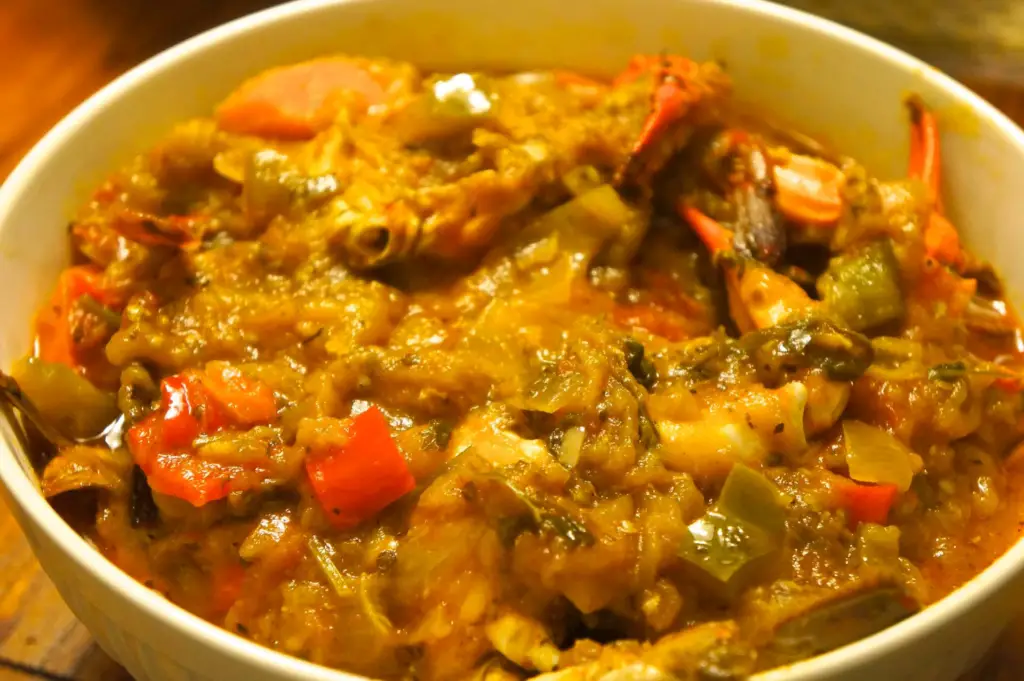
For vegetarians, the legume is a great option. This hearty vegetable stew is made with a variety of vegetables, including eggplant, carrots, and cabbage, and is typically served with rice.
Legume in Haitian cuisine refers to a hearty stew made with mixed vegetables and meat, often served with rice. The dish is flavorful and rich, with the vegetables mashed to create a thick sauce. Here’s a recipe for Haitian Legume:
Haitian Food – Ingredients:
For the Meat:
- 500g beef stew meat, cut into chunks
- 250g pork shoulder or pork butt, cut into chunks (optional)
- 250g crab legs or shrimp (optional)
- Juice of 2 limes
- 3-4 cloves garlic, minced
- 1 small onion, finely chopped
- 2 green onions, chopped
- 1 Scotch bonnet pepper, seeds removed and finely chopped (adjust to your heat preference)
- Salt and pepper to taste
For the Legume:
- 1 eggplant, peeled and diced
- 1/2 head of cabbage, chopped
- 2 carrots, peeled and diced
- 1 bell pepper, chopped
- 2 cups spinach or watercress
- 1/4 cup chopped parsley
- 4-5 cloves garlic, minced
- 1 small onion, chopped
- 1 Scotch bonnet pepper (optional)
- 1/4 cup tomato paste
- 4 cups beef or chicken broth
- 1 tablespoon olive oil or vegetable oil
- 1 teaspoon thyme (fresh or dried)
- Salt and pepper to taste
Haitian Food – Preparation Instructions
Marinating the Meat
- In a large bowl, combine lime juice, garlic, onion, green onions, Scotch bonnet pepper, salt, and pepper.
- Add the beef, pork, and seafood (if using) to the marinade, ensuring each piece is well-coated.
- Cover and refrigerate for at least 2 hours, preferably overnight.
Cooking the Meat
- In a large pot, heat oil over medium heat.
- Add the marinated meat (reserve the marinade) and brown on all sides.
- Once browned, add the reserved marinade and enough broth to cover the meat.
- Bring to a boil, then reduce heat and simmer until the meat is tender, about 1-1.5 hours.
Preparing the Legume
- In a separate pot, boil the eggplant, cabbage, carrots, and bell pepper until they are soft.
- Drain the water and mash the vegetables using a potato masher or blender.
- Once the meat is tender, add the mashed vegetables to the pot with the meat.
- Stir in the spinach or watercress, parsley, garlic, onion, Scotch bonnet pepper (if using), tomato paste, and the remaining broth.
- Season with thyme, salt, and pepper.
- Simmer the mixture on low heat for another 30 minutes, stirring occasionally.
Serve the Legume with white rice or rice and beans. Enjoy your Haitian Legume!
Haitian Cuisine – Soup Joumou
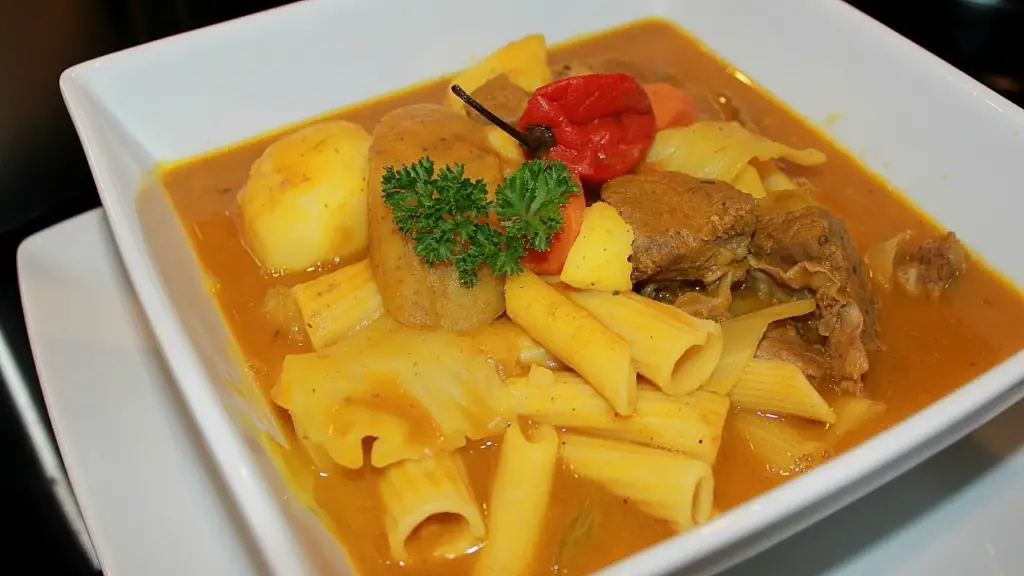
Another famous Haitian dish that have gained international recognition include the soup joumou, a hearty soup made with pumpkin, beef, and vegetables.
Soup Joumou, also known as Haitian Pumpkin Soup, is a traditional dish that holds significant cultural importance. It’s traditionally consumed on New Year’s Day (January 1st) to celebrate Haitian Independence Day and to honor the country’s rich history and the resilience of its people.
The soup symbolizes freedom, as it was a dish that enslaved Haitians were not allowed to have, but became a staple of celebration once they gained their independence.
Here’s a recipe for Haitian Soup Joumou:
Haitian Food – Ingredients:
- 500g beef stew meat, cut into chunks
- 1 medium joumou (Haitian pumpkin or squash), peeled and diced
- 2 large carrots, sliced
- 2 potatoes, peeled and diced
- 1/2 small cabbage, chopped
- 1 celery stalk, chopped
- 1 leek, cleaned and chopped
- 1 small onion, finely chopped
- 3-4 cloves garlic, minced
- 1 Scotch bonnet pepper, seeds removed and finely chopped (adjust to your heat preference)
- Juice of 2 limes
- 1/4 cup pasta (like vermicelli or small elbow macaroni)
- 8 cups water or beef broth
- 2 tablespoons olive oil or vegetable oil
- 1 teaspoon thyme (fresh or dried)
- 2 whole cloves
- Salt and pepper to taste
Preparation Instructions:
Marinating the Meat
- In a large bowl, combine lime juice, garlic, onion, Scotch bonnet pepper, salt, and pepper.
- Add the beef to the marinade, ensuring each piece is well-coated.
- Cover and refrigerate for at least 2 hours, preferably overnight.
Cooking the Meat
- In a large pot, heat oil over medium heat.
- Add the marinated meat (reserve the marinade) and brown on all sides.
- Once browned, add the reserved marinade and enough water or broth to cover the meat.
- Bring to a boil, then reduce heat and simmer until the meat is tender, about 1-1.5 hours.
Preparing the Soup
- Once the meat is tender, add the diced joumou (pumpkin) to the pot.
- Cook until the joumou is soft and can be easily mashed.
- Using a potato masher or blender, mash the joumou to create a smooth consistency.
- Add the carrots, potatoes, cabbage, celery, leek, and pasta to the pot.
- Add more water or broth if needed. Season with thyme, cloves, salt, and pepper.
- Simmer the soup on low heat for another 30-40 minutes, or until all the vegetables are tender and the pasta is cooked.
Serve the Soup Joumou hot with crusty bread or rolls. Enjoy your Haitian Soup Joumou and the rich history it represents!
Haitian Cuisine – Haitian Patty

Another is the Haitian patty, a flaky pastry filled with spiced meat or vegetables.
Haitian Patties (Pâté Haitien) are delicious savory pastries filled with various fillings, such as meat, fish, or vegetables. They are flaky on the outside with a flavorful filling on the inside. Here’s a recipe for Haitian Meat Patties:
Haitian Food – Ingredients:
For the Dough:
- 2 cups all-purpose flour
- 1 cup cold unsalted butter, cut into small cubes
- 1/4 cup ice-cold water
- 1 teaspoon salt
- 1 egg, beaten (for egg wash)
For the Meat Filling:
- 250g ground beef or chicken
- 1 small onion, finely chopped
- 2 cloves garlic, minced
- 1/2 bell pepper, finely chopped
- 1 Scotch bonnet pepper, seeds removed and finely chopped (optional)
- 2 green onions, chopped
- 1 teaspoon fresh thyme leaves
- 1 tablespoon tomato paste
- 1/4 cup beef or chicken broth
- Salt and pepper to taste
- 1 tablespoon vegetable oil
Haitian Food – Preparation Instructions:
Making the Dough
- In a large bowl, combine the flour and salt.
- Add the cold butter cubes and use your fingers or a pastry cutter to incorporate the butter into the flour until the mixture resembles coarse crumbs.
- Gradually add the ice-cold water, mixing until the dough comes together.
- Form the dough into a ball, wrap in plastic wrap, and refrigerate for at least 1 hour.
Preparing the Meat Filling
- In a skillet, heat the vegetable oil over medium heat.
- Add the onions, garlic, bell pepper, and Scotch bonnet pepper (if using).
- Sauté until the onions are translucent.
- Add the ground beef or chicken and cook until browned.
- Add the green onions, thyme, tomato paste, broth, salt, and pepper.
- Cook for another 10-15 minutes until the mixture is well combined and the liquid has reduced.
- Remove from heat and let it cool.
Assembling the Patties
- Preheat your oven to 200°C (400°F).
- Roll out the chilled dough on a floured surface to about 1/8-inch thickness.
- Using a round cutter or a glass, cut out circles from the dough.
- Place a spoonful of the meat filling in the center of each circle.
- Fold the dough over the filling to create a half-moon shape.
- Press the edges with a fork to seal.
- Place the patties on a baking sheet lined with parchment paper.
- Brush the tops with the beaten egg to give them a golden finish.
Bake in the preheated oven for 20-25 minutes or until the patties are golden brown.
Serve the Haitian Patties hot with your favorite dipping sauce or enjoy them on their own. They make a great snack or appetizer!
Haitian Food – TomTom ak Kalalou Gombo
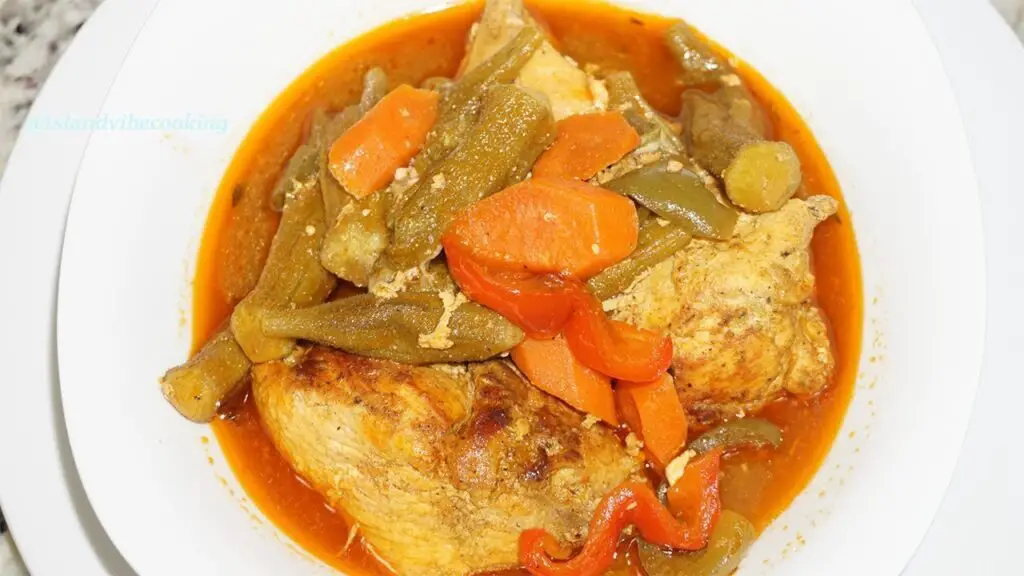
History and Background of TomTom ak Kalalou Gombo
TomTom ak Kalalou Gombo, a traditional Haitian dish, showcases the culinary ingenuity of the Haitian people. The name translates to “TomTom with Okra and Sorrel,” signifying the key ingredients used in this flavorful and nutritious soup.
Rooted in Haitian agricultural practices, this dish often features locally sourced ingredients, reflecting the connection between the land and the table. TomTom ak Kalalou Gombo stands as a representation of the resourcefulness and richness embedded in Haitian culinary heritage.
Region of Origin
TomTom ak Kalalou Gombo is a dish enjoyed throughout Haiti, with variations in ingredients and preparation methods based on regional influences. It is commonly prepared in both rural and urban settings, bringing communities together through shared meals.
Haitian Food – Ingredients for TomTom ak Kalalou Gombo
TomTom Base:
- 1 medium-size green plantain, peeled and grated
- 1 cup malanga, grated
- 1 cup yam, grated
- 1 cup pumpkin, grated
- 1 onion, finely chopped
- 3 cloves garlic, minced
- 2 sprigs thyme
- 2 sprigs parsley
- 2 whole cloves
- 1 scotch bonnet pepper (optional for heat)
- Salt and black pepper to taste
- Water
Kalalou Gombo:
- 2 cups okra, sliced
- 2 cups sorrel leaves, chopped
- 1 eggplant, diced
- 1 cup spinach or other leafy greens, chopped
- 1 cup crab meat or other seafood (shrimp, fish) – optional
- 1 lime, juiced
Serving:
- Cooked white rice
Haitian Food – Recipe for TomTom ak Kalalou Gombo
Preparing TomTom Base
- Grate Vegetables:
- Peel and grate the green plantain, malanga, yam, and pumpkin.
- Create TomTom Base:
- In a large pot, combine the grated vegetables with chopped onion, minced garlic, thyme, parsley, cloves, scotch bonnet pepper (if using), salt, and black pepper.
- Cover with water and bring to a boil.
Serving Information
- Servings: 6-8
- Preparation Time: 30 minutes
- Cooking Time: Approximately 1 hour
- Calories (per serving): Approximately 250 kcal
Adding Kalalou Gombo
- Slice Okra:
- Slice okra into rounds and set aside.
- Prepare Sorrel Leaves and Other Vegetables:
- Chop sorrel leaves, dice eggplant, and chop spinach or other leafy greens.
- Add Seafood (Optional):
- If using crab meat or other seafood, add it to the pot.
- Simmer and Add Vegetables:
- Let the TomTom base simmer until the grated vegetables are fully cooked.
- Add sliced okra, chopped sorrel leaves, diced eggplant, and chopped spinach.
- Season and Finish Cooking:
- Season with lime juice and additional salt and pepper if needed.
- Allow the soup to simmer until all the vegetables are tender and flavors meld together.
- Serve TomTom ak Kalalou Gombo:
- Serve hot over a bed of cooked white rice.
TomTom ak Kalalou Gombo offers a delightful combination of textures and flavors, showcasing the diverse and nutritious ingredients found in Haitian cuisine. This soup is a celebration of the bounty of the land, bringing warmth and satisfaction to those who gather around the Haitian table.
Haitian Cuisine – Sweet Potato Pudding

Finally, we have a popular dessert called Sweet Potato Pudding. Made with mashed sweet potatoes, coconut milk, and warm spices like cinnamon and nutmeg, this pudding is a comforting and delicious way to end any meal.
Haitian Sweet Potato Pudding, known as “Pain Patate” in Creole, is a delicious dessert made from sweet potatoes, coconut milk, and various spices. It’s a rich and flavorful treat that’s often enjoyed during the holiday season and special occasions. Here’s a recipe for Haitian Sweet Potato Pudding (Pain Patate):
Haitian Food – Ingredients:
- 500g sweet potatoes, peeled and grated
- 1 cup coconut milk
- 1 cup evaporated milk
- 1/2 cup brown sugar (adjust to taste)
- 1/4 cup raisins
- 1/4 cup unsweetened shredded coconut
- 2 tablespoons butter, melted
- 1 teaspoon vanilla extract
- 1/2 teaspoon ground cinnamon
- 1/4 teaspoon ground nutmeg
- 1/4 teaspoon ground cloves
- 1/4 teaspoon salt
- Zest of 1 lime
- 2-3 strips of lime peel
- 1 tablespoon dark rum (optional)
Haitian Food – Preparation Instructions:
- Preparing the Mixture: In a large mixing bowl, combine the grated sweet potatoes, coconut milk, evaporated milk, brown sugar, raisins, shredded coconut, melted butter, vanilla extract, cinnamon, nutmeg, cloves, salt, and lime zest. Mix well until all the ingredients are well-incorporated.
- If you’re using rum, add it to the mixture and stir well.
- Cooking the Pudding: Pour the sweet potato mixture into a greased baking dish. Place the lime peel strips on top of the mixture to infuse flavor while baking.
- Preheat your oven to 175°C (350°F). Bake the pudding in the preheated oven for about 1 to 1.5 hours, or until the pudding is set and the top is golden brown. You can test the doneness by inserting a knife into the center of the pudding; it should come out clean.
- Once done, remove the pudding from the oven and let it cool for a bit. Remove the lime peel strips before serving.
Serve the Haitian Sweet Potato Pudding (Pain Patate) warm or at room temperature. It can be enjoyed on its own or with a scoop of vanilla ice cream. Enjoy your Haitian dessert!
Haitian Food – Kasav

History and Background of Kasav
Kasav, a traditional Haitian flatbread, has deep historical roots in the country’s culinary heritage. Emerging from the indigenous Taino people, kasav is a testament to the resourcefulness of Haitian cooking, utilizing cassava, a staple crop in the region.
Cassava flatbreads have been crafted for centuries, evolving into the versatile and gluten-free kasav enjoyed today. This unleavened bread not only reflects the resilience of Haitian culinary traditions but also serves as a fundamental accompaniment to various dishes, embodying the spirit of communal meals and celebrations.
Region of Origin
Kasav is a popular and widespread dish in Haiti, appreciated across the country and among the Haitian diasporas. Its preparation methods and regional variations may differ, but its presence is a constant in Haitian households.
Haitian Food – Ingredients for Kasav
For Kasav Dough:
- 4 cups grated cassava
- 1 cup coconut milk
- 1 teaspoon salt
For Cooking:
- Banana leaves or parchment paper
- Butter or oil for greasing
Haitian Food – Recipe for Kasav
Making Kasav Dough
- Prepare Cassava:
- Peel and grate cassava to obtain 4 cups of grated cassava.
- Mix Ingredients:
- In a bowl, combine the grated cassava, coconut milk, and salt.
- Mix well to form a smooth and slightly sticky dough.
Serving Information
- Servings: 6-8 kasav (varies based on size)
- Preparation Time: 20 minutes
- Cooking Time: Approximately 30 minutes
- Calories (per serving): Approximately 150 kcal
Cooking Kasav
- Prepare Banana Leaves or Parchment:
- If using banana leaves, cut them into square pieces and pass them over an open flame to make them pliable.
- If using parchment paper, cut it into squares.
- Shape and Cook Kasav:
- Take a portion of the kasav dough and place it on a banana leaf or parchment paper.
- Flatten the dough into a thin, round disc, shaping it to your desired size.
- Cook on a Griddle:
- Heat a griddle or flat pan and lightly grease with butter or oil.
- Place the shaped kasav on the griddle and cook until the edges start to crisp and the bread is cooked through.
- Flip and Cook:
- Flip the kasav to cook the other side until golden brown spots appear.
- Serve Kasav:
- Remove from the griddle and repeat the process with the remaining dough.
- Serve kasav warm, accompanying it with various dishes or enjoying it on its own.
Kasav’s simplicity and versatility make it a beloved companion to many Haitian meals. This gluten-free flatbread showcases the purity of cassava and coconut, embodying the essence of Haitian cuisine and its celebration of locally sourced ingredients.
Haitian Food – Bonbon Siwo

History and Background of Bonbon Siwo
Bonbon Siwo, a traditional Haitian confection, has a sweet history intertwined with the cultural fabric of Haiti. Translated as “Black Candy,” this treat reflects the fusion of African and French culinary influences in Haitian cuisine.
With roots in sugarcane cultivation, Bonbon Siwo pays homage to the agricultural heritage of Haiti. This sweet and chewy delight is not just a dessert but a celebration of the nation’s resilience and joy, making it a cherished part of Haitian culinary traditions.
Region of Origin
Bonbon Siwo is enjoyed across Haiti, and its preparation methods may vary slightly from one region to another. However, its presence as a delightful sweet is a constant in Haitian households and celebrations.
Ingredients for Bonbon Siwo
For the Sugar Base:
- 2 cups brown sugar
- 1 cup water
- 1 tablespoon lime juice
- 1 tablespoon butter
- 1/2 teaspoon vanilla extract
- Pinch of salt
For Coating (Optional):
- Grated coconut
- Sesame seeds
Recipe for Bonbon Siwo
Preparing the Sugar Base
- Create Sugar Syrup:
- In a saucepan, combine brown sugar, water, and lime juice.
- Heat the mixture over medium heat, stirring until the sugar dissolves.
- Add Flavorings:
- Add butter, vanilla extract, and a pinch of salt to the sugar syrup.
- Continue stirring and let the mixture simmer until it reaches a soft-ball stage (about 235-240°F or 113-116°C).
Serving Information
- Servings: 12-16 bonbons
- Cooking Time: Approximately 30 minutes
- Calories (per serving): Approximately 120 kcal
Forming Bonbon Siwo
- Cool and Shape:
- Allow the sugar syrup to cool until it is manageable to touch.
- Grease your hands with butter and start shaping the cooled syrup into small, round bonbons.
- Coat (Optional):
- Roll the bonbons in grated coconut or sesame seeds for additional flavor and texture.
- Set and Serve:
- Let the Bonbon Siwo set for a few hours or overnight.
- Once set, arrange the bonbons on a platter or in candy cups.
- Enjoy Bonbon Siwo:
- Serve these sweet delights during celebrations, holidays, or as a delightful treat for family and friends.
Bonbon Siwo encapsulates the sweetness of Haitian traditions, offering a burst of flavor in each chewy bite. As a symbol of joy and sweetness, this confection is a testament to the rich cultural heritage that defines Haitian culinary practices.
Haitian Food – Dous Makòs
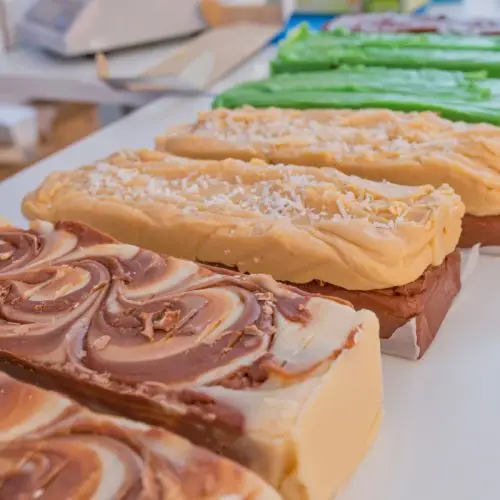
History and Background of Dous Makòs
Dous Makòs, a delightful and sweet treat from Haitian cuisine, has a history rooted in the country’s rich cultural tapestry. The name “Dous Makòs” translates to “Sweet Macoss” in Haitian Creole, and this confection is a beloved part of Haitian culinary traditions.
With influences from French and African culinary techniques, Dous Makòs has become a popular dessert enjoyed during celebrations, festivals, and family gatherings. This fudgy and flavorful sweet reflects the essence of Haitian hospitality and the joy found in sharing delectable moments.
Region of Origin
Dous Makòs is a cherished dessert throughout Haiti, enjoyed by locals and visitors alike. Its preparation and variations may differ across regions, but the sweet indulgence is a common thread that ties together the diverse culinary landscape of the country.
Haitian Food – Ingredients for Dous Makòs
For the Base:
- 2 cups granulated sugar
- 1 cup water
- 1 teaspoon vanilla extract
- 1 can evaporated milk
- 1 cup unsweetened shredded coconut
- 1 cup finely ground peanuts
- 1/2 cup butter
- Pinch of salt
For Garnish (Optional):
- Additional shredded coconut
- Chopped nuts
Haitian Food – Recipe for Dous Makòs
Preparing the Base
- Prepare Sugar Syrup:
- In a saucepan, combine sugar and water over medium heat.
- Stir until the sugar dissolves to create a syrup.
- Add Vanilla and Milk:
- Add vanilla extract to the sugar syrup.
- Pour in the evaporated milk and mix well.
- Incorporate Ingredients:
- Stir in shredded coconut, ground peanuts, butter, and a pinch of salt.
- Continue cooking over medium heat, stirring constantly to avoid sticking.
- Cook to Desired Consistency:
- Cook the mixture until it thickens to a fudgy consistency. This may take around 30-40 minutes.
Serving Information
- Servings: 12-16
- Cooking Time: Approximately 40 minutes
- Calories (per serving): Approximately 200 kcal
Garnishing and Setting
- Prepare Pan:
- Grease a square or rectangular pan with butter or line it with parchment paper.
- Pour Mixture:
- Pour the thickened Dous Makòs mixture into the prepared pan.
- Garnish (Optional):
- Sprinkle additional shredded coconut or chopped nuts on top for added texture and flavor.
- Cool and Cut:
- Allow Dous Makòs to cool and set in the refrigerator for a few hours or overnight.
- Once set, cut into squares or rectangles.
- Serve Dous Makòs:
- Serve chilled as a delightful sweet treat to be enjoyed on its own or alongside other Haitian desserts.
Dous Makòs captures the sweetness of Haitian culinary traditions, bringing joy to those who savor its rich and fudgy goodness. As a beloved dessert in Haitian culture, it stands as a symbol of celebration and togetherness.
Haitian Food – Dous Kokoye

History and Background of Dous Kokoye
Dous Kokoye, a delightful Haitian sweet treat, has its roots deeply embedded in the country’s culinary traditions. This coconut fudge showcases the importance of coconut in Haitian cuisine and exemplifies the creativity in transforming simple ingredients into a rich and indulgent dessert.
Dous Kokoye is not only a flavorful confection but also a symbol of the resourcefulness and resilience ingrained in Haitian culinary heritage.
Region of Origin
Dous Kokoye is a beloved dessert enjoyed throughout Haiti, with variations in preparation methods influenced by regional preferences.
Whether crafted in the bustling markets of Port-au-Prince or in the kitchens of rural households, Dous Kokoye is a sweet delight that brings communities together through shared moments of indulgence.
Haitian Food – Ingredients for Dous Kokoye
- 4 cups freshly grated coconut
- 2 cups brown sugar
- 1 cup water
- 1/2 teaspoon vanilla extract
- Pinch of salt
Haitian Food – Recipe for Dous Kokoye
Preparing Dous Kokoye
- Grate Fresh Coconut:
- Begin by grating four cups of fresh coconut. The use of freshly grated coconut enhances the texture and flavor of Dous Kokoye.
- Create Coconut Base:
- In a large, heavy-bottomed pot, combine the freshly grated coconut with brown sugar, water, vanilla extract, and a pinch of salt.
- Cook Over Medium Heat:
- Place the pot over medium heat and stir the mixture continuously to prevent sticking.
Serving Information
- Servings: 12-15 pieces
- Preparation Time: 10 minutes
- Cooking Time: Approximately 30-40 minutes
- Calories (per serving): Approximately 200 kcal
Cooking Dous Kokoye
- Cook Until Thickened:
- Continue cooking the mixture until it thickens, and the coconut absorbs the flavors of sugar and vanilla.
- The mixture should reach a fudge-like consistency.
- Test for Doneness:
- To test for doneness, drop a small amount of the mixture into a bowl of cold water. If it forms a soft ball, the Dous Kokoye is ready.
- Shape and Cool:
- Once the desired consistency is achieved, remove the pot from heat.
- Allow the mixture to cool slightly before shaping it into small, individual pieces.
Enjoying Dous Kokoye
- Serve and Indulge:
- Arrange the shaped Dous Kokoye pieces on a plate and let them cool completely.
- Once cooled, savor the sweet, coconutty goodness of Dous Kokoye.
Dous Kokoye is a celebration of Haiti’s tropical flavors, transforming humble coconut into a decadent and satisfying treat. Whether enjoyed during festive occasions or as a delightful everyday indulgence, Dous Kokoye encapsulates the essence of Haitian sweetness.
Haitian Food – Pain Mais
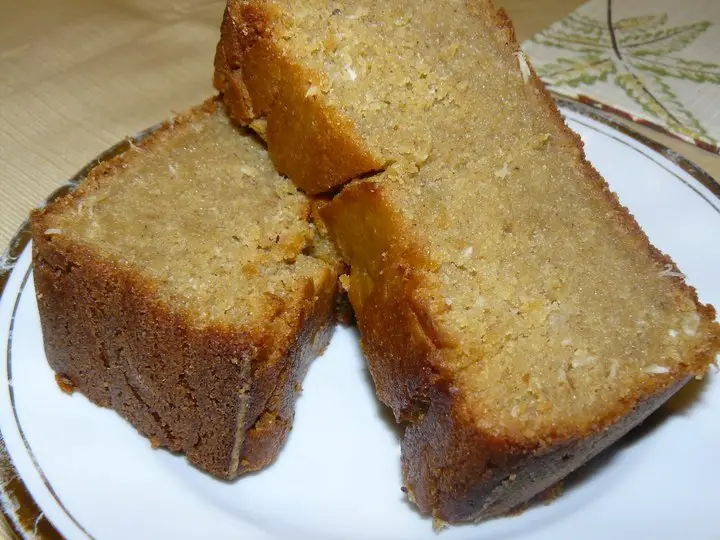
History and Background of Pain Mais
Pain Mais, a Haitian cornbread, reflects the historical significance of corn in Haitian cuisine. This simple yet delicious dish has deep roots in the agricultural practices of Haiti, where corn holds a prominent place in daily meals.
Pain Mais serves as a testament to the resourcefulness of Haitian cooks, transforming basic ingredients into a versatile and satisfying bread. With its golden hue and hearty texture, Pain Mais is a staple that resonates with the cultural and culinary identity of Haiti.
Region of Origin
Pain Mais is enjoyed across Haiti, from the rural countryside to urban kitchens. This cornbread is a versatile accompaniment, often served alongside meals or enjoyed on its own. Its preparation may vary based on regional preferences, making it a beloved and accessible dish throughout the country.
Haitian Food – Ingredients for Pain Mais
- 2 cups cornmeal
- 1 cup all-purpose flour
- 1 cup sugar
- 1 tablespoon baking powder
- 1/2 teaspoon salt
- 2 cups milk
- 1/2 cup unsalted butter, melted
- 2 large eggs
- 1 teaspoon vanilla extract
Haitian Food – Recipe for Pain Mais
Preparing Pain Mais
- Preheat Oven:
- Preheat the oven to 375°F (190°C). Grease a baking dish or line it with parchment paper.
- Combine Dry Ingredients:
- In a large mixing bowl, combine cornmeal, all-purpose flour, sugar, baking powder, and salt. Mix well.
- Prepare Wet Ingredients:
- In a separate bowl, whisk together milk, melted butter, eggs, and vanilla extract.
Serving Information
- Servings: 8-10
- Preparation Time: 10 minutes
- Baking Time: Approximately 30-35 minutes
- Calories (per serving): Approximately 300 kcal
Mixing and Baking
- Combine Wet and Dry Mixtures:
- Pour the wet ingredients into the bowl with dry ingredients. Stir until just combined, ensuring not to overmix.
- Pour into Baking Dish:
- Pour the batter into the prepared baking dish, spreading it evenly.
- Bake Until Golden Brown:
- Bake in the preheated oven for 30-35 minutes or until the top is golden brown, and a toothpick inserted into the center comes out clean.
Serving Pain Mais
- Cool and Slice:
- Allow Pain Mais to cool in the baking dish for a few minutes before transferring it to a wire rack to cool completely.
- Slice and Serve:
- Once cooled, slice the cornbread into squares or wedges and serve.
Pain Mais is a versatile bread that complements various Haitian dishes or stands alone as a delightful snack. Its golden crust and moist interior make it a cherished part of Haitian culinary traditions, bringing warmth and comfort to those who enjoy it.
Haitian Food – Beignet Haïtien

History and Background of Beignet Haïtien
Beignet Haïtien, or Haitian Beignet, is a delightful fried dough delicacy deeply rooted in Haitian culinary traditions. This beloved snack reflects the cultural and historical influences that have shaped Haitian cuisine over the years.
The simplicity of the ingredients, combined with the skillful preparation, makes Beignet Haïtien a cherished treat enjoyed across Haiti. Whether served during festive occasions or as an everyday indulgence, these golden-brown, fluffy pastries encapsulate the essence of Haitian comfort food.
Region of Origin
Beignet Haïtien is a popular street food and home treat enjoyed throughout Haiti. Whether purchased from local vendors or prepared in family kitchens, these fried delights are a symbol of togetherness and celebration. The recipe may vary slightly between regions, but the love for Beignet Haïtien is universal among the Haitian people.
Haitian Food – Ingredients for Beignet Haïtien
- 2 cups all-purpose flour
- 1/4 cup sugar
- 1 teaspoon baking powder
- 1/4 teaspoon salt
- 2 large eggs
- 1 cup milk
- 1 teaspoon vanilla extract
- Vegetable oil (for frying)
- Powdered sugar (for dusting)
Haitian Food – Recipe for Beignet Haïtien
Preparing Beignet Haïtien
- Combine Dry Ingredients:
- In a mixing bowl, combine flour, sugar, baking powder, and salt. Mix well to ensure even distribution of ingredients.
- Whisk Wet Ingredients:
- In a separate bowl, whisk together eggs, milk, and vanilla extract until the mixture is well combined.
- Create Batter:
- Slowly pour the wet ingredients into the bowl with the dry ingredients, stirring continuously to form a smooth, thick batter.
Serving Information
- Servings: Approximately 12 beignets
- Preparation Time: 15 minutes
- Cooking Time: Approximately 10 minutes
- Calories (per serving): Approximately 150 kcal
Frying Beignet Haïtien
- Heat Oil:
- In a deep pan or fryer, heat vegetable oil to 350°F (180°C).
- Scoop and Fry:
- Using a spoon or scoop, carefully drop portions of the batter into the hot oil. Ensure not to overcrowd the pan.
- Fry Until Golden Brown:
- Fry the beignets until they turn golden brown on both sides, ensuring they cook evenly. This usually takes about 2-3 minutes per side.
Dusting and Serving
- Drain and Dust with Powdered Sugar:
- Once cooked, remove the beignets from the oil and place them on a paper towel to drain excess oil.
- Generously dust the warm beignets with powdered sugar.
- Serve Warm:
- Beignet Haïtien is best enjoyed warm. Serve immediately and savor the crispy exterior and soft interior.
Beignet Haïtien is a delightful snack that brings joy to Haitian households and gatherings. Whether enjoyed as a morning treat with coffee or as an afternoon snack, these fried pastries capture the essence of Haitian culinary comfort.
Haitian Food – Rum Raisin Ice Cream

History and Background of Rum Raisin Ice Cream
Rum Raisin Ice Cream, a delightful frozen treat, has found its way into the heart of Haitian dessert culture. With a nod to the country’s historical ties to sugarcane cultivation and rum production, this creamy concoction blends rich, boozy flavors with plump raisins to create a dessert that’s both indulgent and reflective of Haiti’s agricultural heritage.
Whether enjoyed on a warm Caribbean day or as a sweet conclusion to a Haitian feast, Rum Raisin Ice Cream embodies the fusion of local ingredients and international influences in Haitian cuisine.
Region of Origin
Rum Raisin Ice Cream is enjoyed in various regions of Haiti, particularly in urban centers and coastal areas. The recipe’s popularity is testament to the widespread appreciation for both the tropical climate’s need for cooling treats and the cultural significance of rum in Haitian gastronomy.
Haitian Food – Ingredients for Rum Raisin Ice Cream
- 2 cups heavy cream
- 1 cup whole milk
- 3/4 cup granulated sugar
- 1/4 cup dark rum
- 1/2 cup raisins
- 1 teaspoon vanilla extract
- 4 large egg yolks
- Pinch of salt
Haitian Food – Recipe for Rum Raisin Ice Cream
Preparing Rum Raisin Ice Cream Base
- Infuse Milk with Rum and Raisins:
- In a saucepan, heat the milk until it just begins to simmer. Remove from heat and add the rum and raisins. Let it steep for 30 minutes to infuse the flavors.
- Strain Raisins and Reserve Liquid:
- Strain the raisins from the milk mixture, reserving both the infused milk and the plump raisins.
- Mix Egg Yolks and Sugar:
- In a bowl, whisk together the egg yolks and sugar until the mixture becomes pale and slightly thick.
Serving Information
- Servings: Approximately 6
- Preparation Time: 15 minutes
- Infusion Time: 30 minutes
- Churning Time: 25-30 minutes
- Freezing Time: 4-6 hours (or overnight)
- Calories (per serving): Approximately 300 kcal
Creating Ice Cream Base
- Temper Egg Mixture:
- Slowly pour the infused milk into the egg yolk mixture, whisking continuously to temper the eggs.
- Cook Custard Base:
- Transfer the mixture back to the saucepan and cook over medium heat, stirring constantly until it thickens into a custard. Do not let it boil.
- Chill Custard:
- Once thickened, strain the custard into a clean bowl and let it cool. Refrigerate until thoroughly chilled.
Churning and Freezing
- Churn Ice Cream:
- Pour the chilled custard into an ice cream maker and churn according to the manufacturer’s instructions.
- Add Raisins:
- In the last few minutes of churning, add the reserved plump raisins.
- Transfer and Freeze:
- Transfer the churned ice cream into a lidded container, spreading it evenly. Freeze for at least 4-6 hours or overnight for a firmer texture.
Serving Rum Raisin Ice Cream
- Scoop and Enjoy:
- Once fully frozen, scoop the Rum Raisin Ice Cream into bowls or cones and savor the delightful combination of creamy richness and spirited raisins.
Rum Raisin Ice Cream offers a taste of the Caribbean with every luscious spoonful, combining the warmth of rum and the sweetness of raisins in a frozen delight that captures the essence of Haitian dessert culture.
Haitian Food – Pen Patat

History and Background of Pen Patat
Pen Patat, a popular Haitian dish, is a sweet and savory treat enjoyed during special occasions and festive gatherings. With roots deeply embedded in Haitian culinary traditions, this dish showcases the versatility of sweet potatoes and the fusion of local flavors.
The preparation of Pen Patat involves layering thinly sliced sweet potatoes with a mixture of spices, raisins, and sometimes coconut milk, resulting in a dish that reflects the diverse influences shaping Haitian cuisine over the years.
Region of Origin
Pen Patat is a beloved dish enjoyed throughout Haiti, particularly during celebratory events and family gatherings. The recipe may vary slightly between regions, but the core ingredients and the joyous spirit associated with Pen Patat remain consistent across the country.
Haitian Food – Ingredients for Pen Patat
- 4 medium-sized sweet potatoes, peeled and thinly sliced
- 1 cup raisins
- 1 cup brown sugar
- 1 teaspoon ground cinnamon
- 1/2 teaspoon ground nutmeg
- 1/4 teaspoon salt
- 1 cup coconut milk (optional)
- Butter for greasing
Haitian Food – Recipe for Pen Patat
Preparing Pen Patat
- Preheat Oven:
- Preheat the oven to 350°F (175°C). Grease a baking dish with butter.
- Layer Sweet Potatoes:
- Arrange a layer of thinly sliced sweet potatoes at the bottom of the greased baking dish.
- Sprinkle Ingredients:
- Sprinkle a portion of raisins, brown sugar, ground cinnamon, ground nutmeg, and a pinch of salt over the sweet potatoes.
Serving Information
- Servings: Approximately 6-8
- Preparation Time: 20 minutes
- Baking Time: 45-50 minutes
- Calories (per serving): Approximately 200 kcal
Building Layers and Baking
- Repeat Layering:
- Repeat the layering process with the remaining sweet potatoes and ingredients until all components are used.
- Optional Coconut Milk:
- If using coconut milk, pour it evenly over the layers, allowing it to seep through the sweet potatoes.
- Cover and Bake:
- Cover the baking dish with aluminum foil and bake in the preheated oven for 45-50 minutes or until the sweet potatoes are tender.
Final Touch and Serving
- Uncover and Broil (Optional):
- If a caramelized top is desired, uncover the dish and broil for an additional 5 minutes or until the top is golden.
- Cool and Serve:
- Allow Pen Patat to cool slightly before serving. The dish can be enjoyed warm or at room temperature.
- Slice and Enjoy:
- Slice the Pen Patat into squares or wedges and serve as a delectable side dish or dessert during festive occasions or family gatherings.
Pen Patat captures the heart and soul of Haitian cuisine, providing a harmonious blend of sweet and savory flavors in every layer. Whether served alongside a savory meal or as a standalone treat, Pen Patat is a delightful representation of Haiti’s culinary heritage.
By following these authentic Haitian recipes, you can experience the diverse and flavorful tastes of traditional Haitian cuisine. From savory stews to sweet and spicy desserts, Haitian food offers something for every palate.
Conclusion
As we conclude our exploration of Haitian cuisine, we have gained a deeper understanding and appreciation for the country’s unique culinary heritage. Haitian food represents a fusion of historical and cultural influences, resulting in vibrant and flavorful dishes that have gained popularity around the world.
Thank you for joining us on this culinary journey through Haiti. We hope you’ve enjoyed learning about the national dish and exploring the authentic recipes of traditional Haitian cuisine. Bon Appétit!
FAQ
What is the national dish of Haiti?
The national dish of Haiti is called “diri ak djon djon.” It consists of rice cooked with djon djon mushrooms, along with flavorful meat or seafood.
What are some popular Haitian dishes?
Some popular Haitian dishes include griot (marinated and fried pork), tassot (marinated and fried goat), and legume (vegetable stew).
What is the cultural significance of Haitian cuisine?
Haitian cuisine is deeply rooted in the country’s history and culture. It is a fusion of African, French, and indigenous influences, representing the diversity of the Haitian people.
Can I cook authentic Haitian recipes at home?
Absolutely! We will provide you with authentic Haitian recipes that you can recreate in your own kitchen, allowing you to experience the vibrant flavors of Haiti.
What are some famous Haitian dishes?
Some famous Haitian dishes that have gained recognition worldwide include griot (marinated and fried pork), conch stew, and sweet potato pudding.

